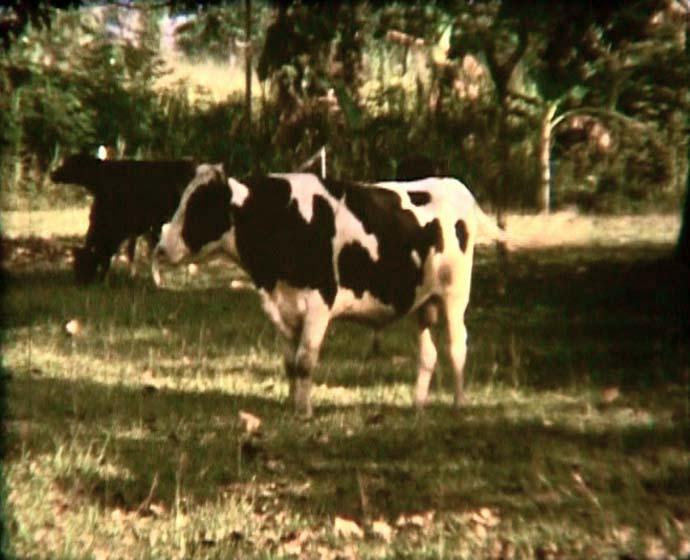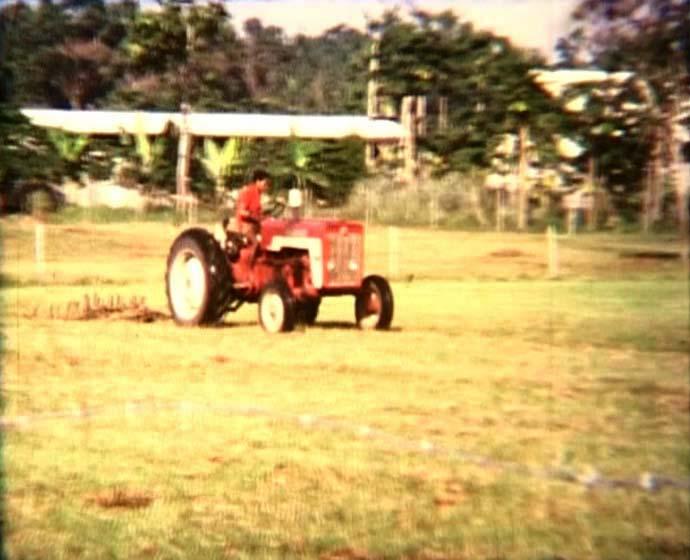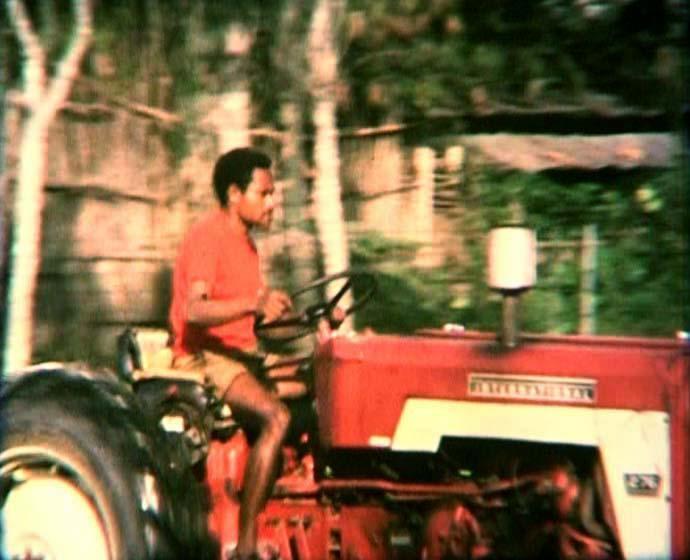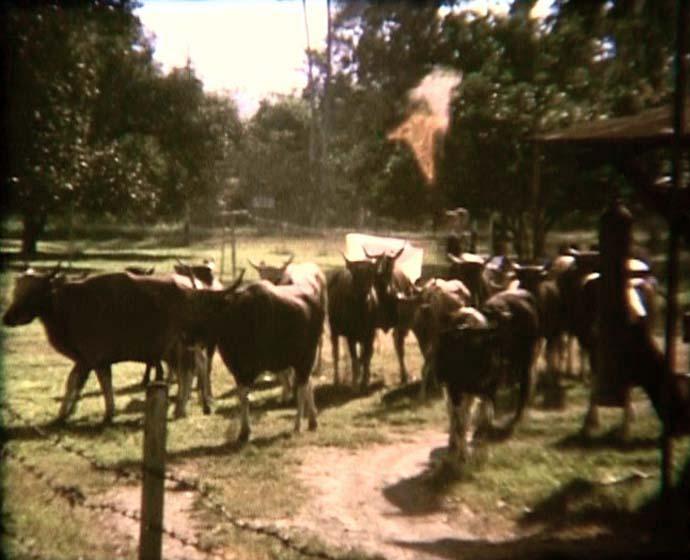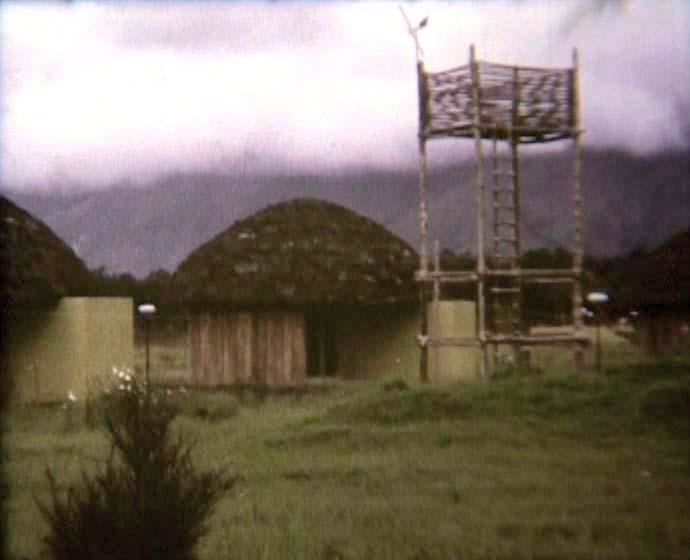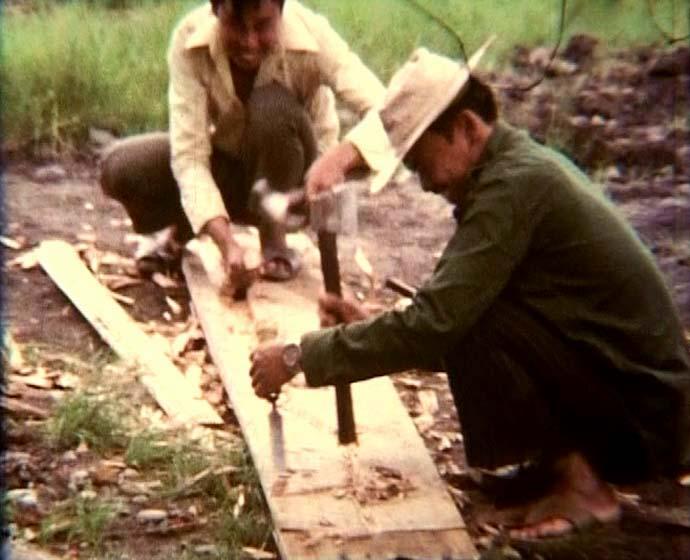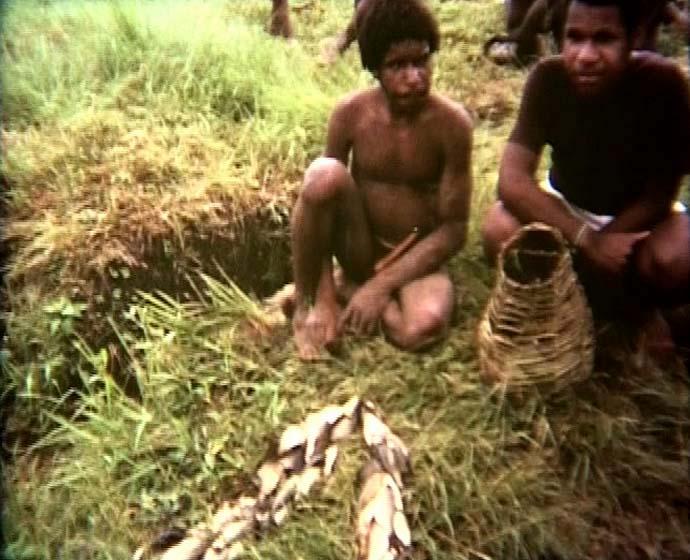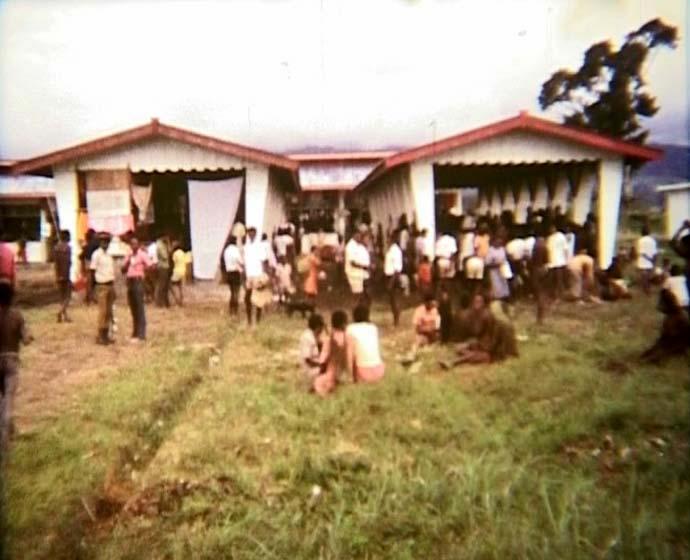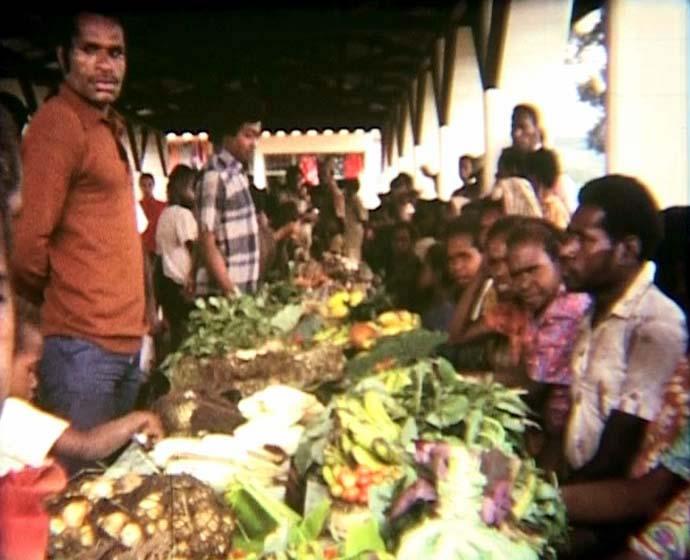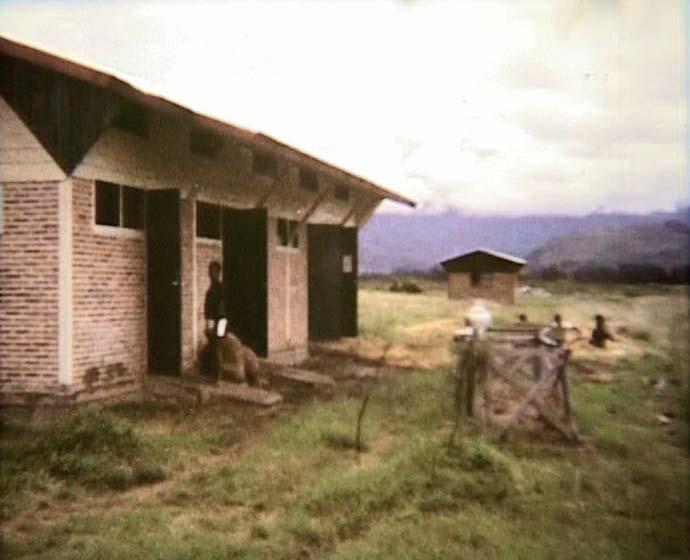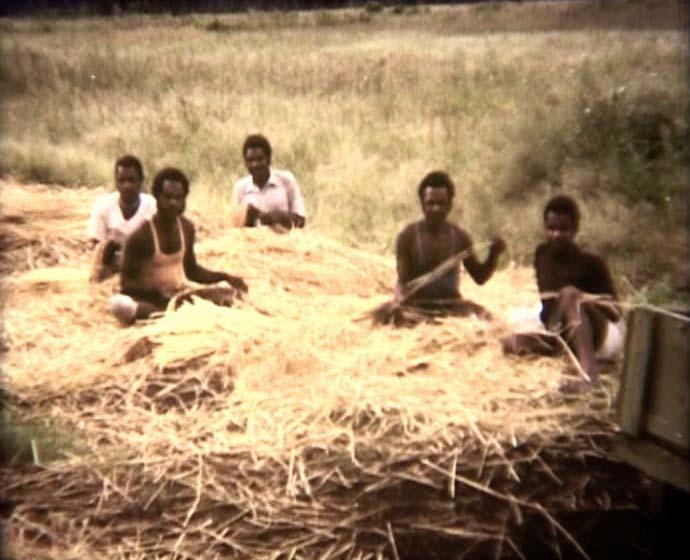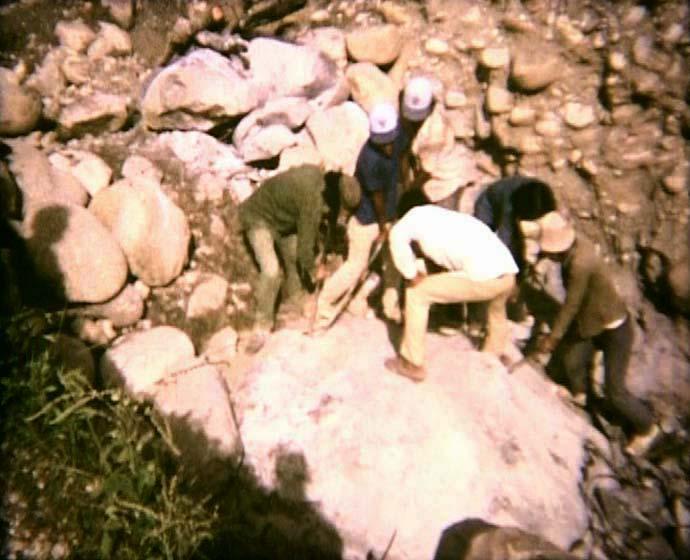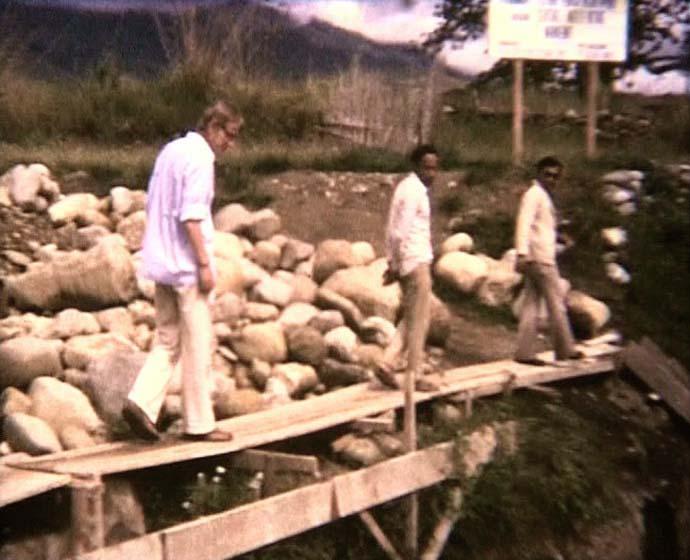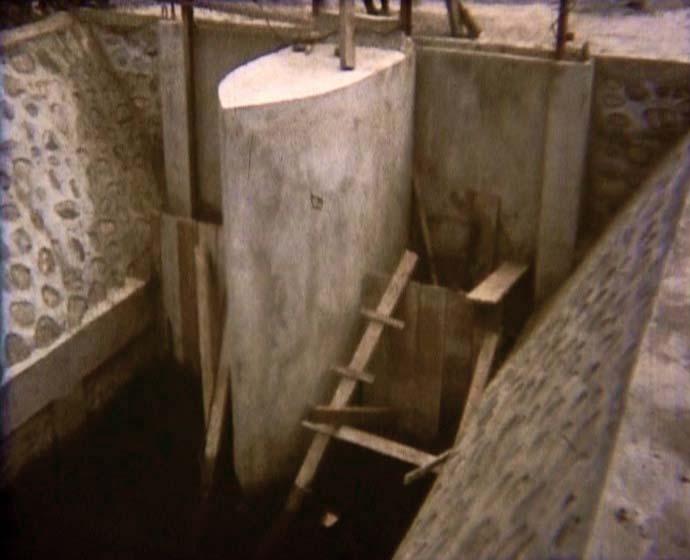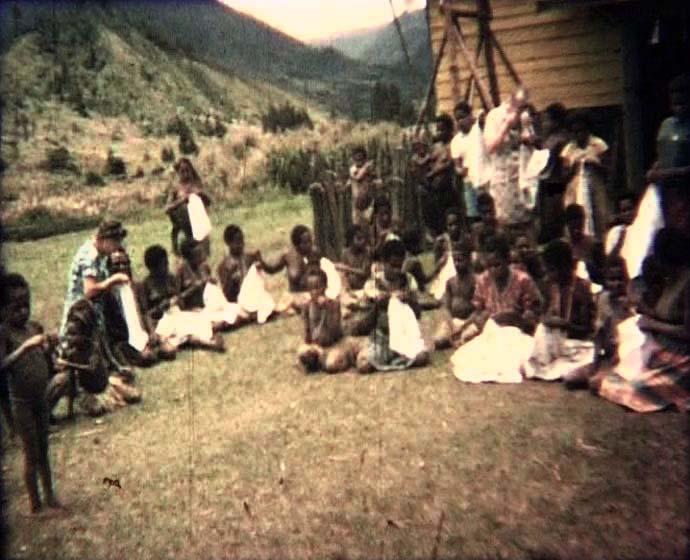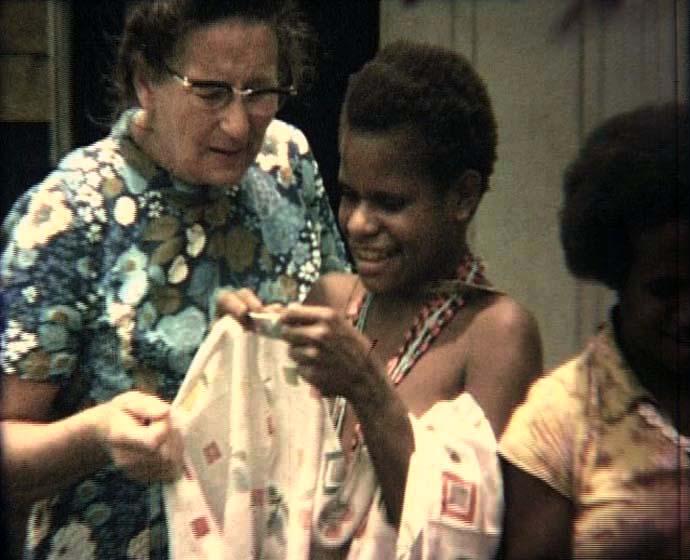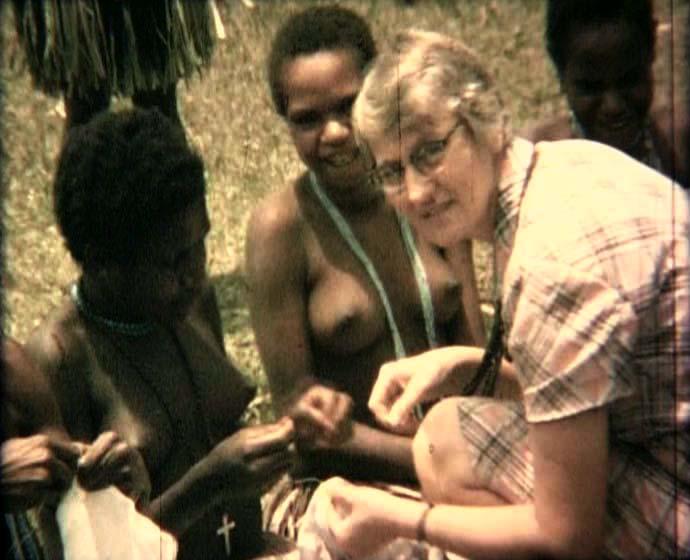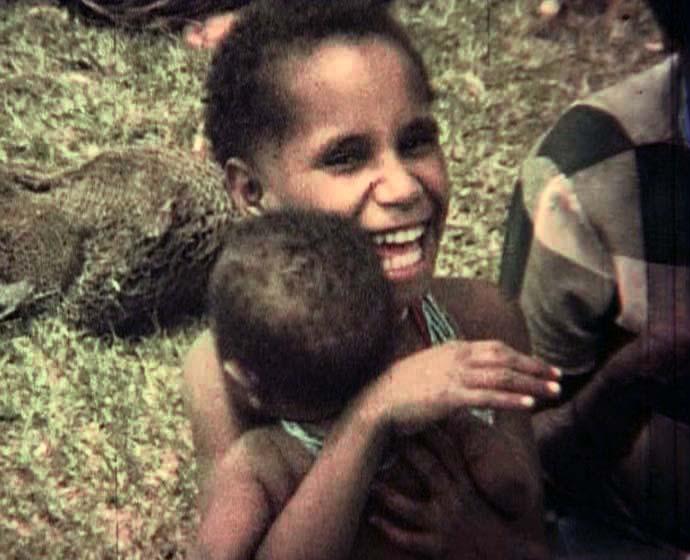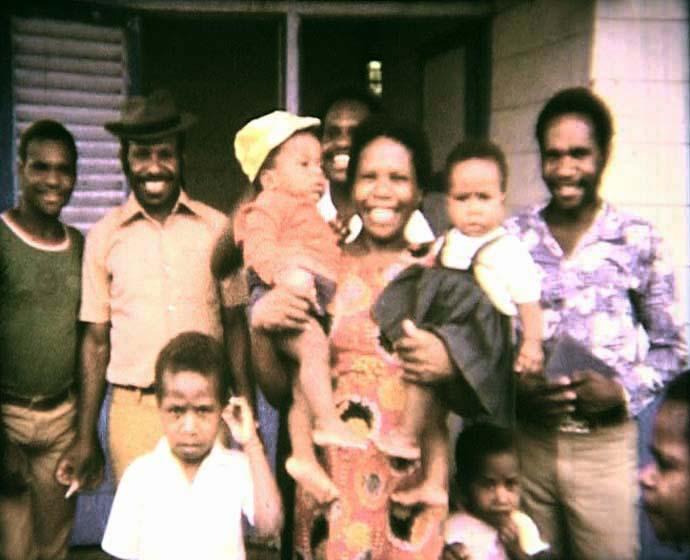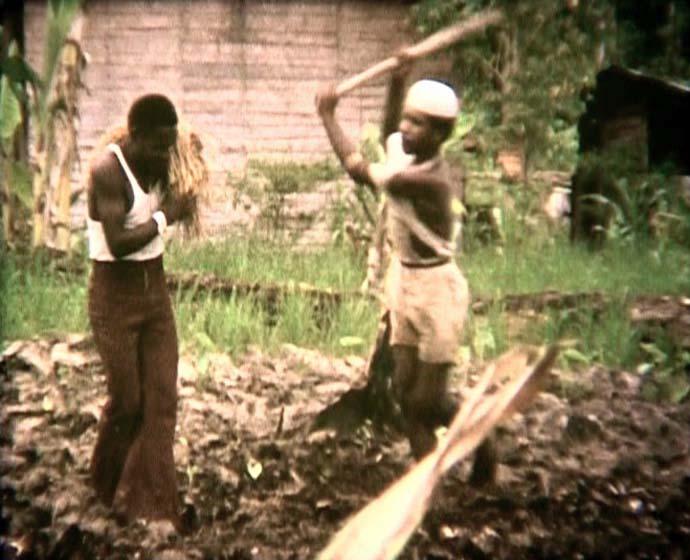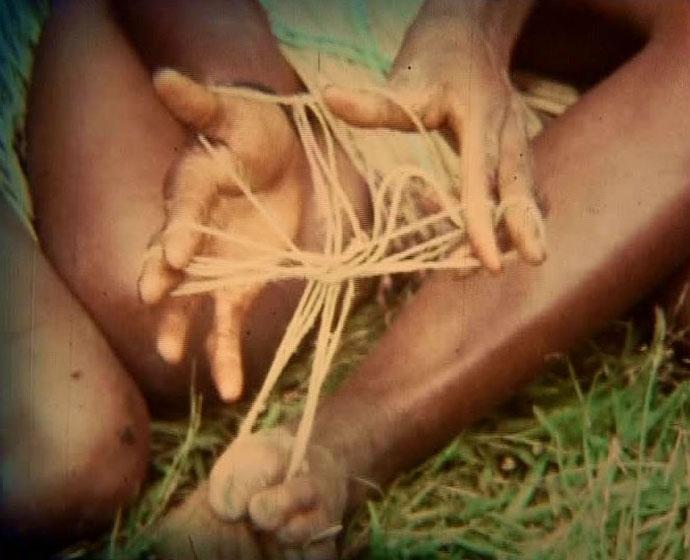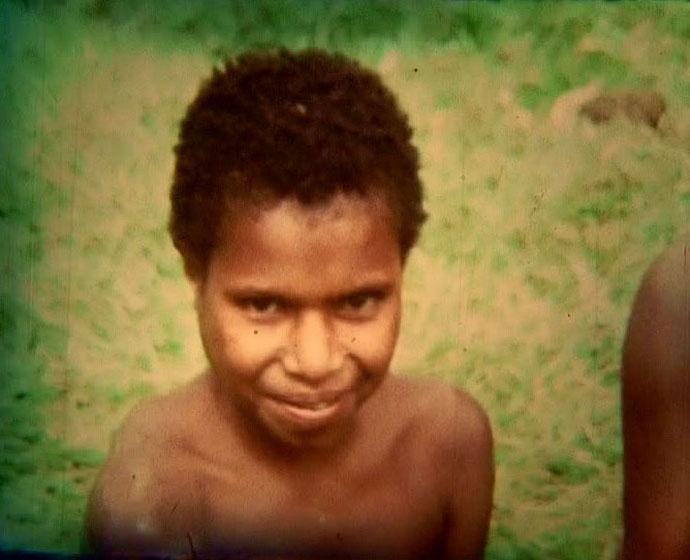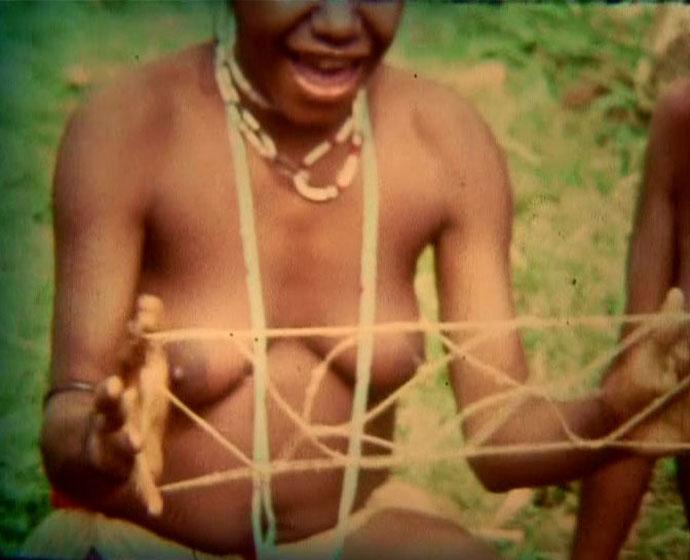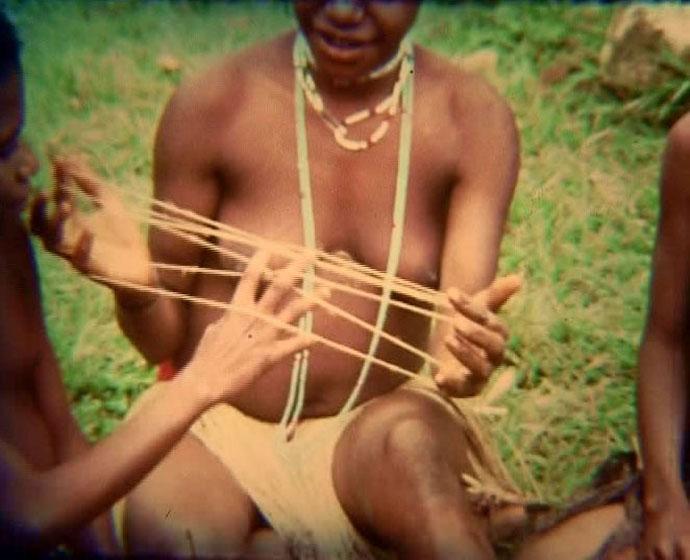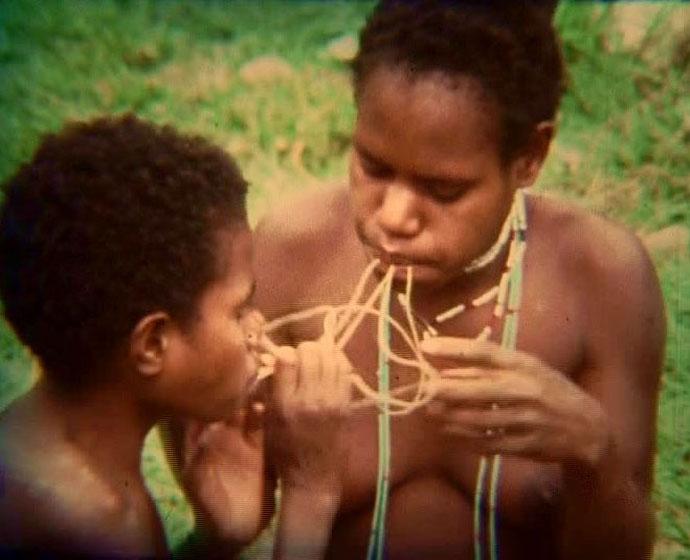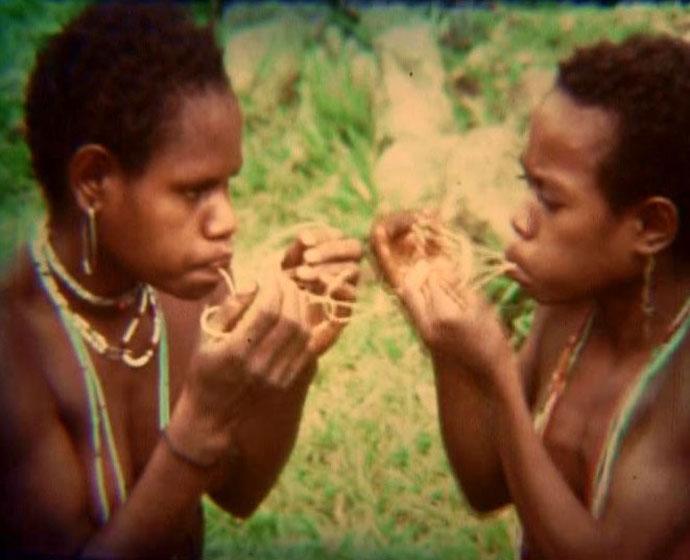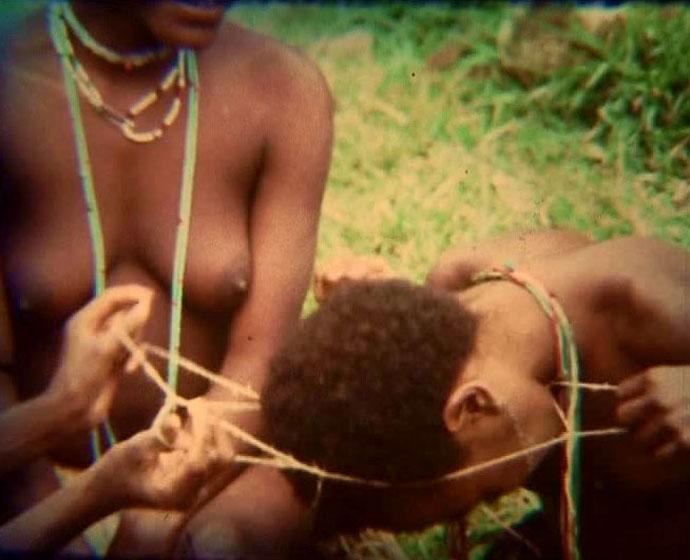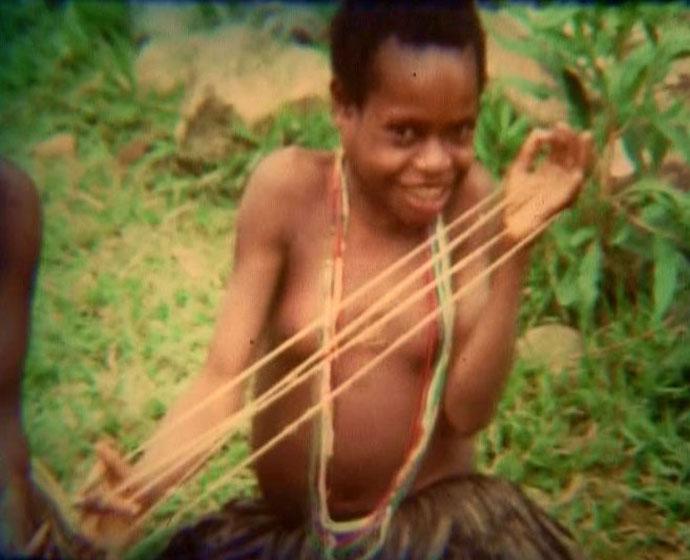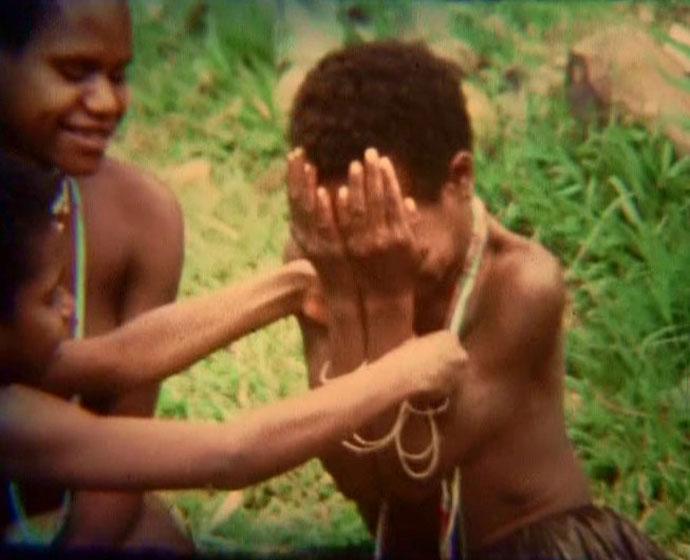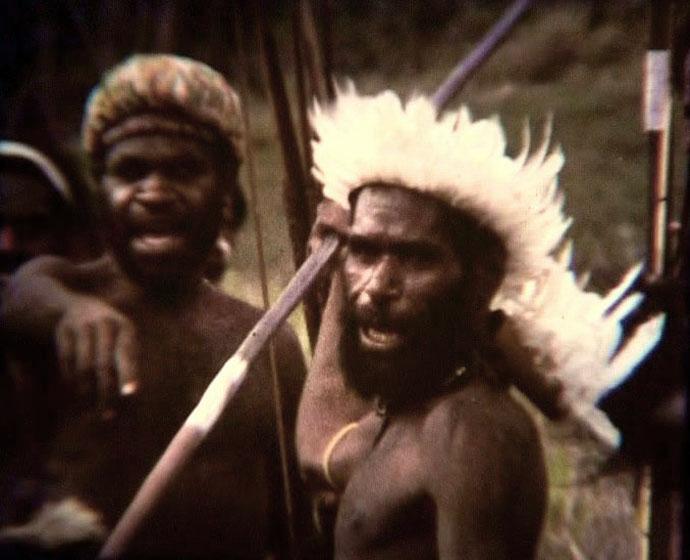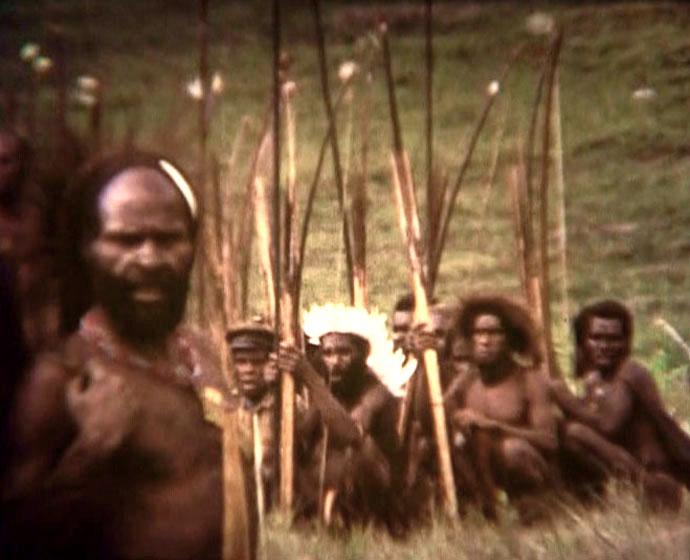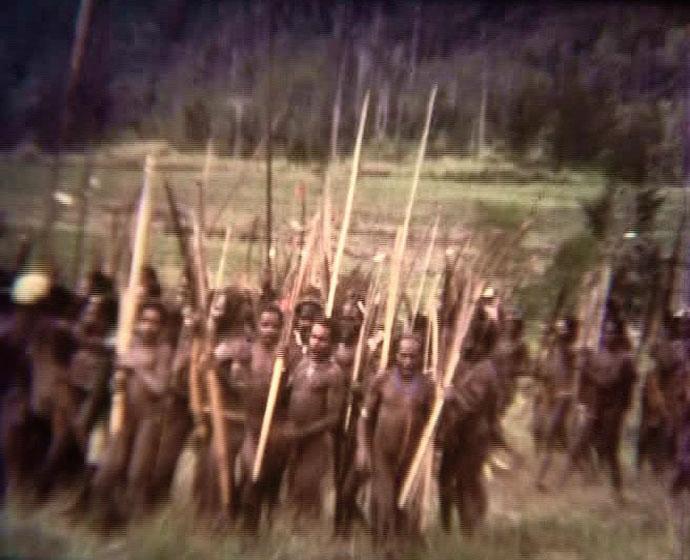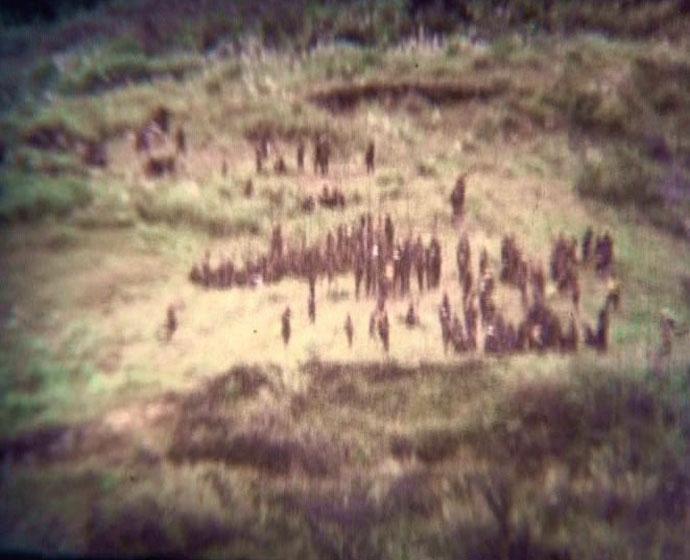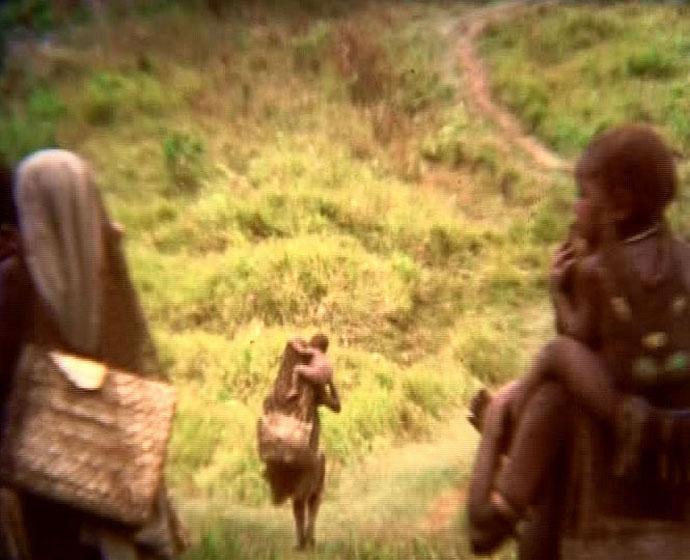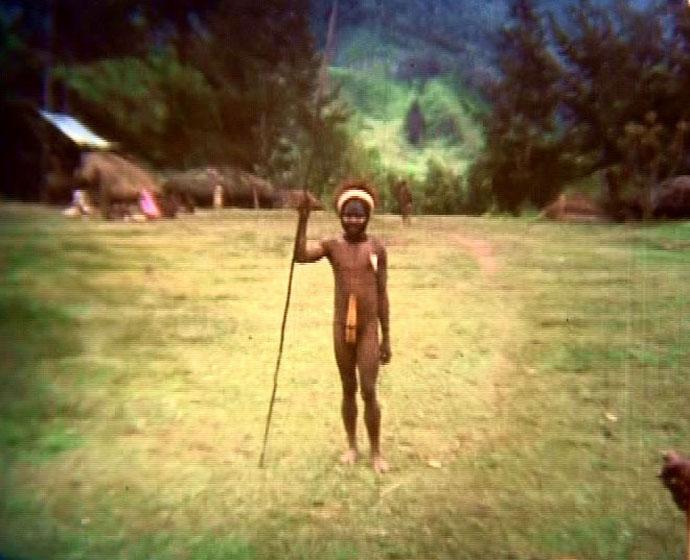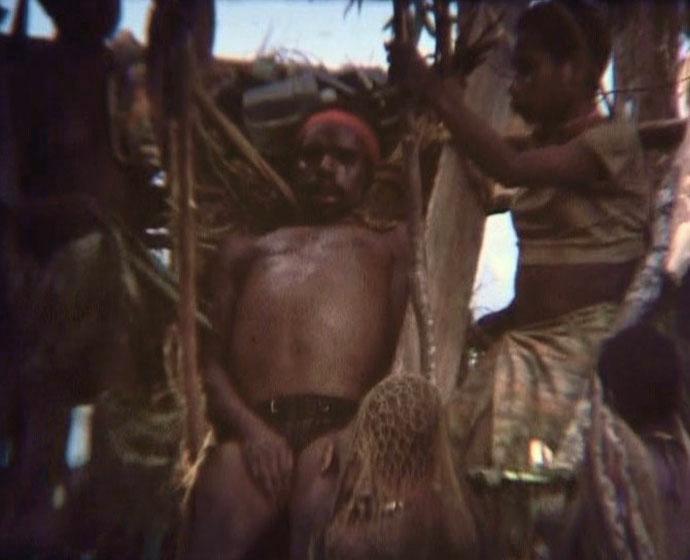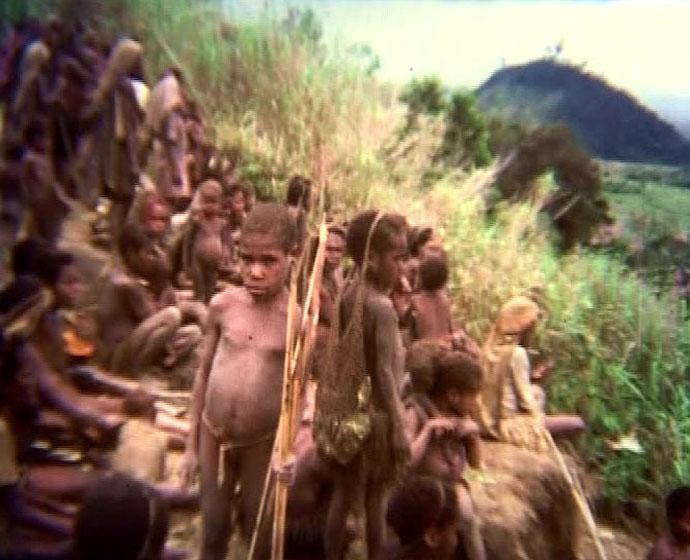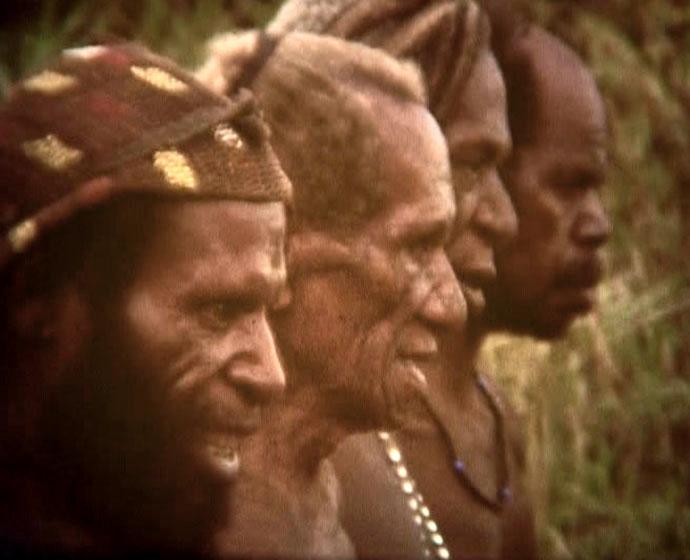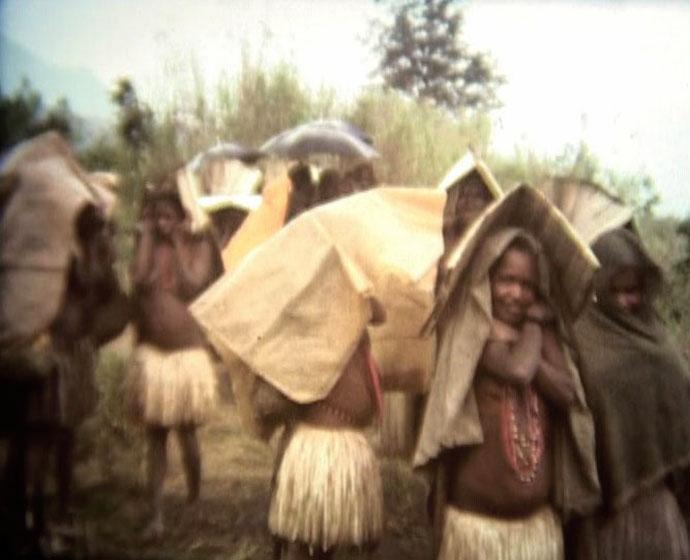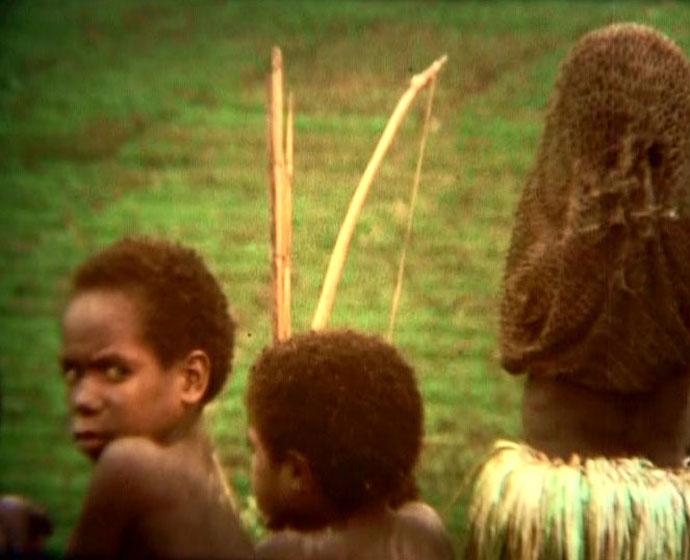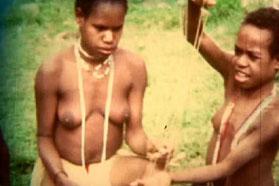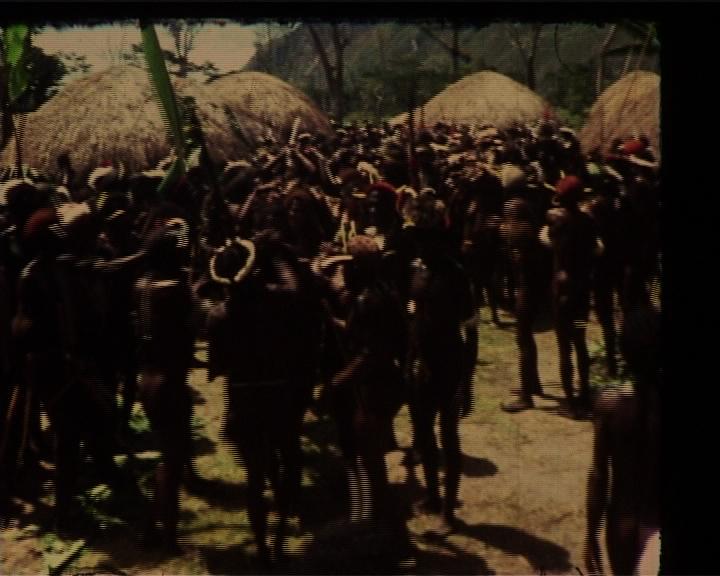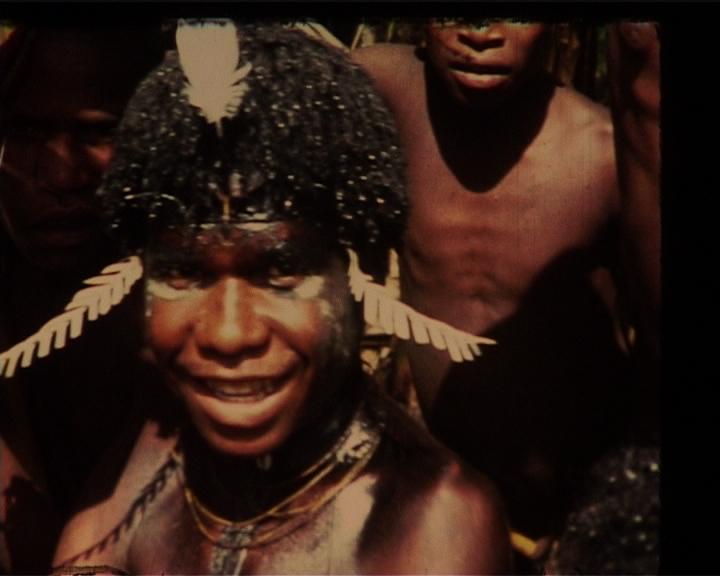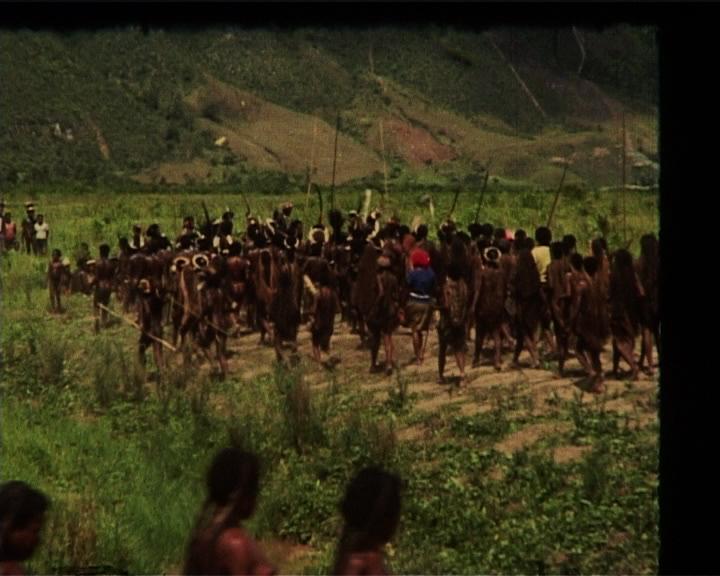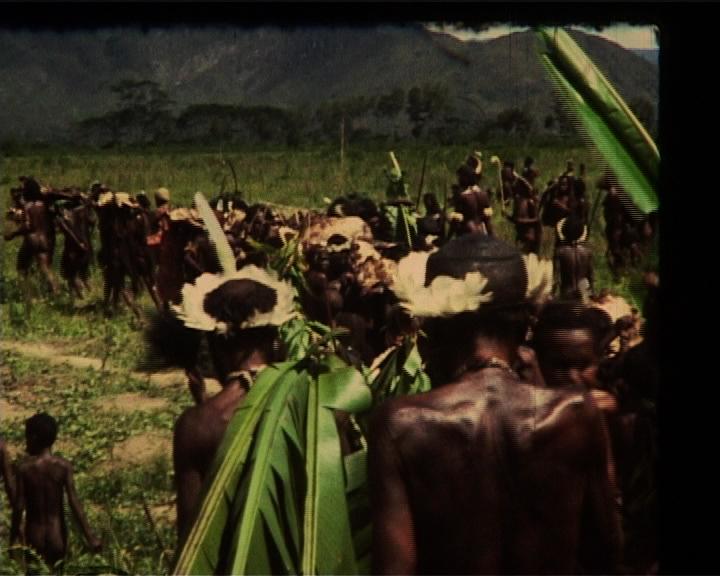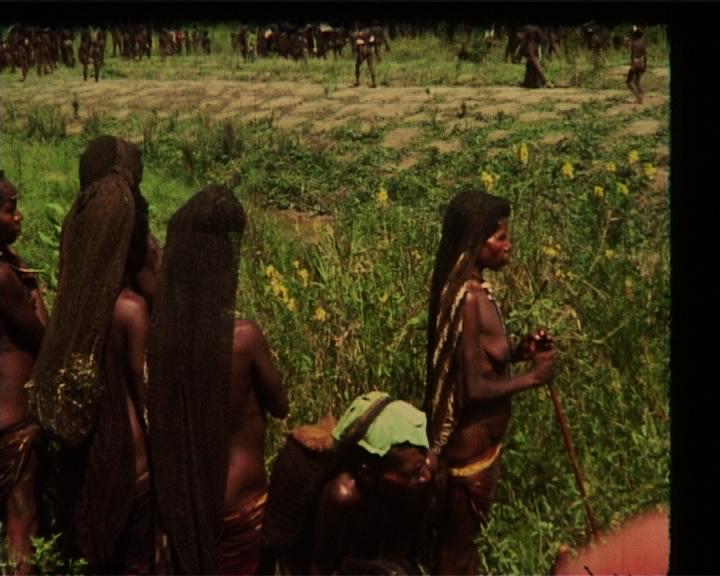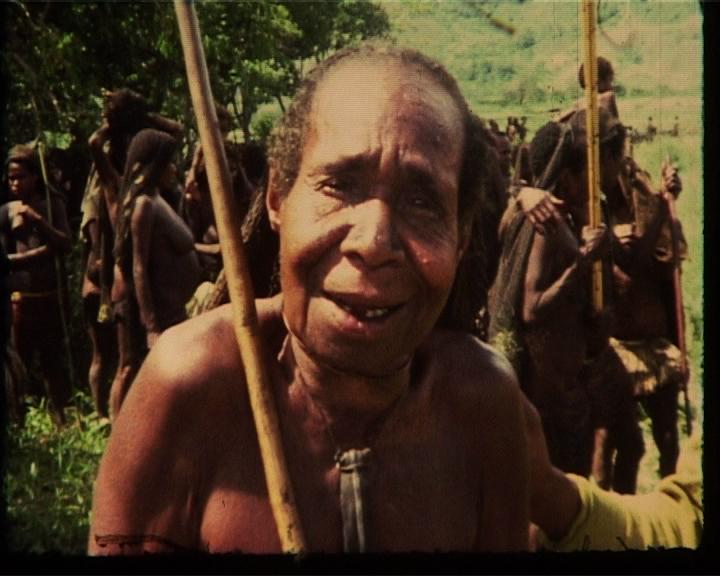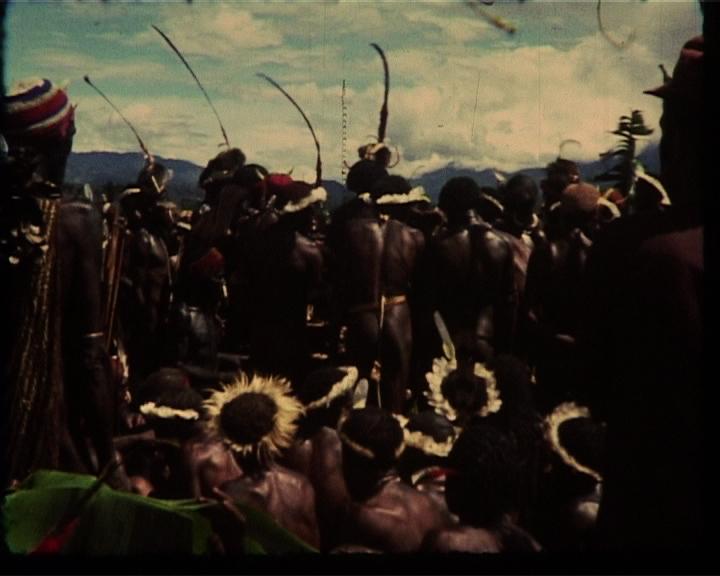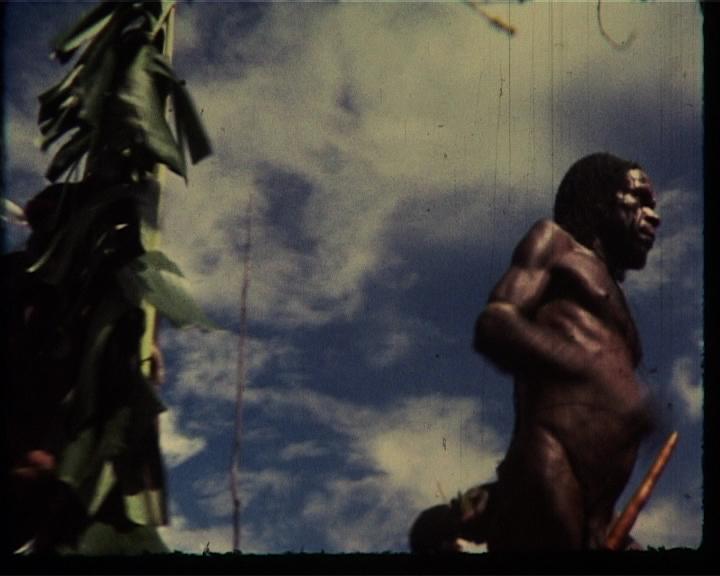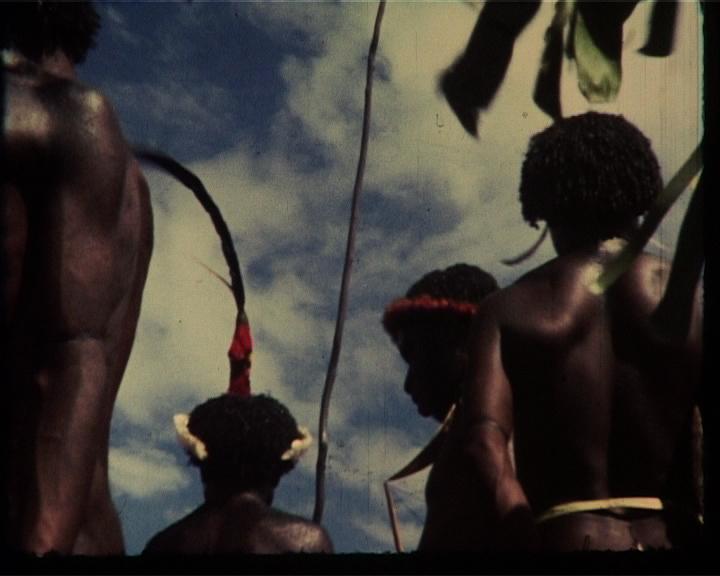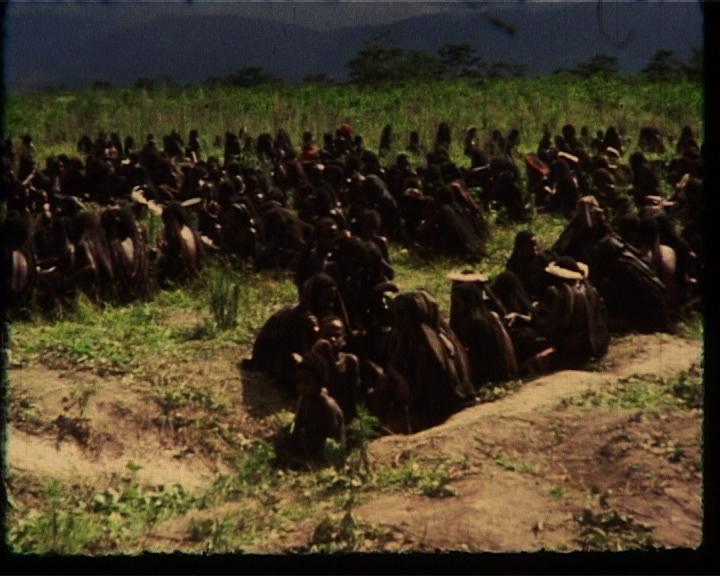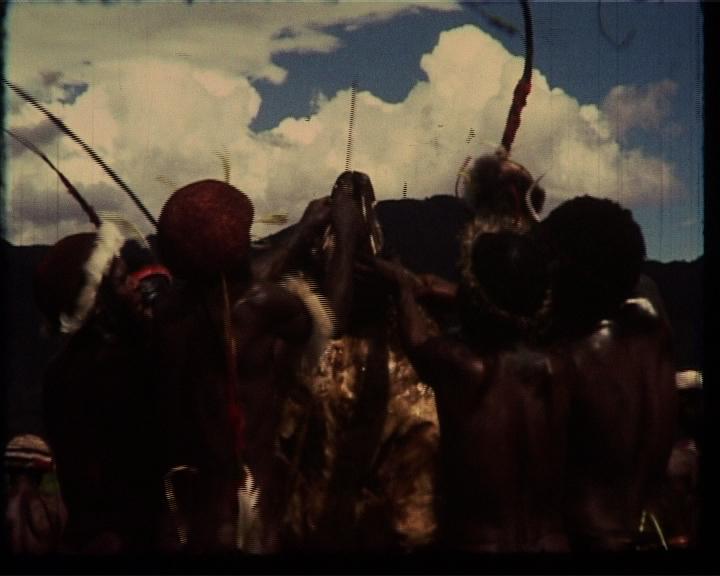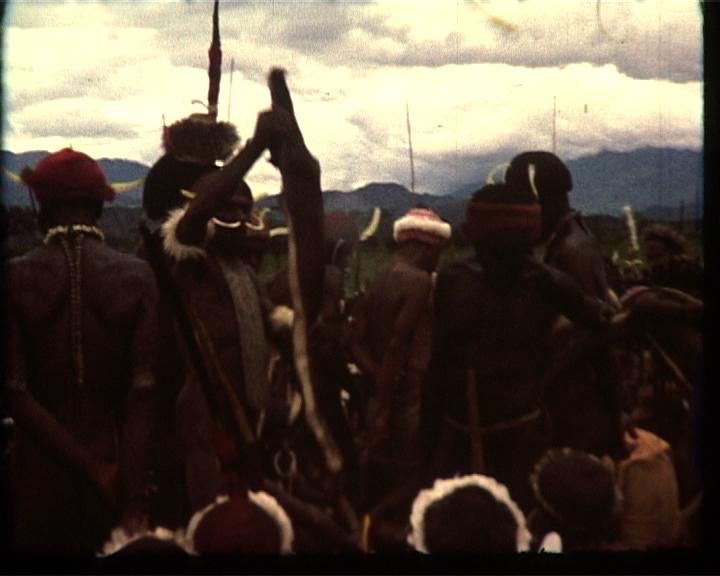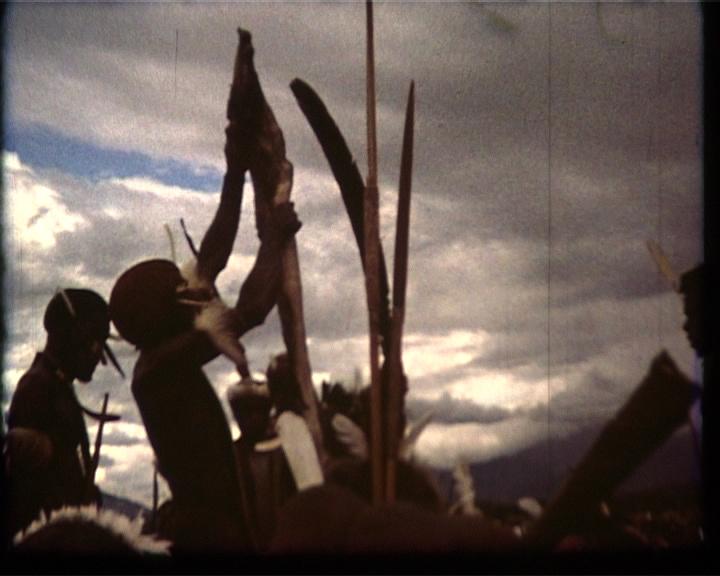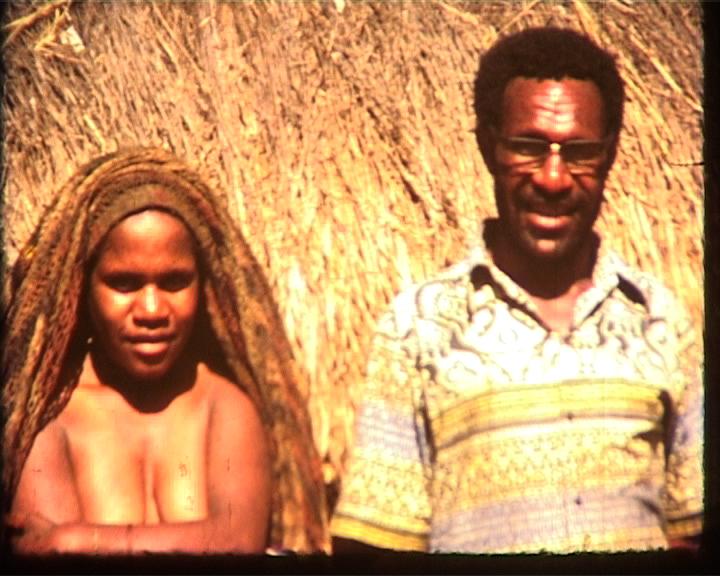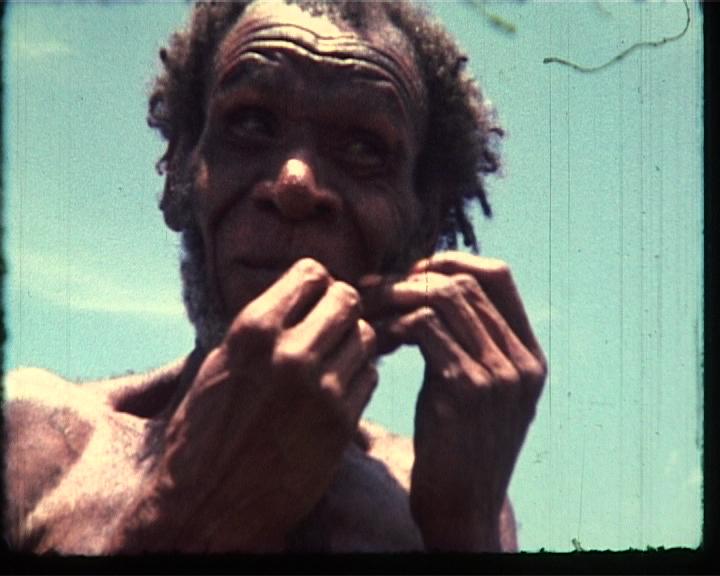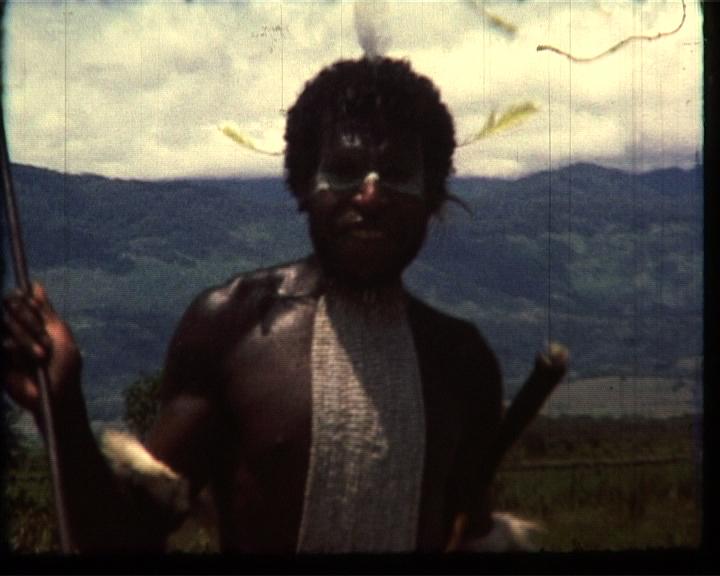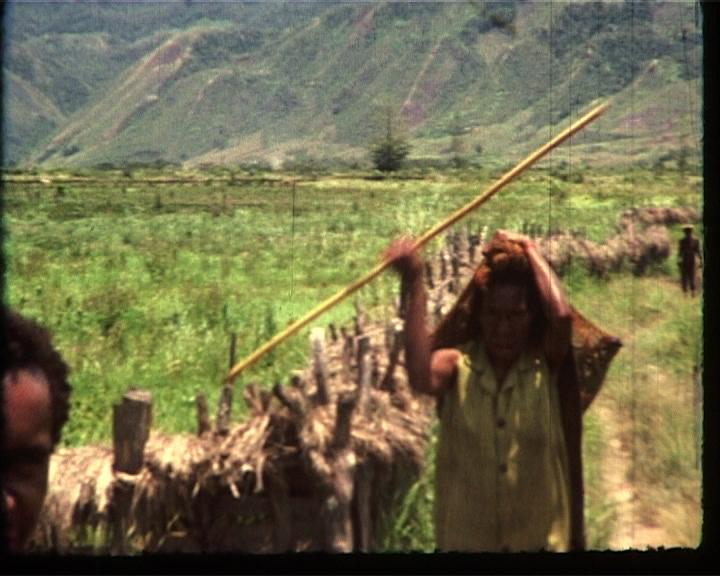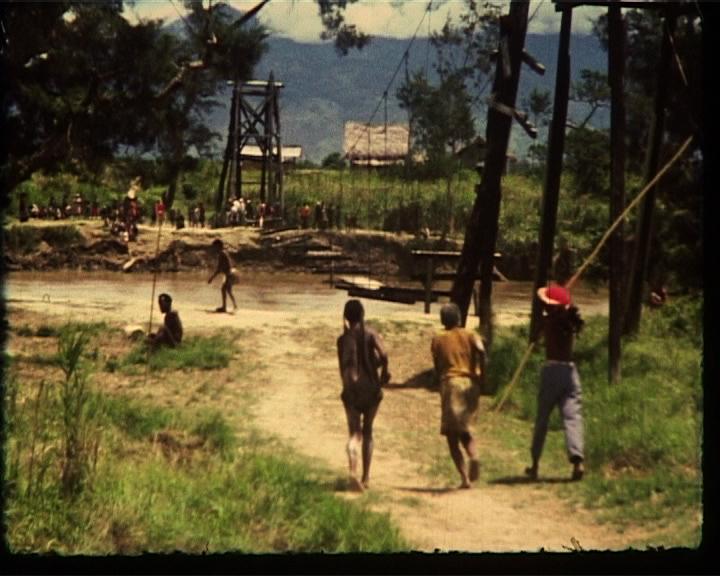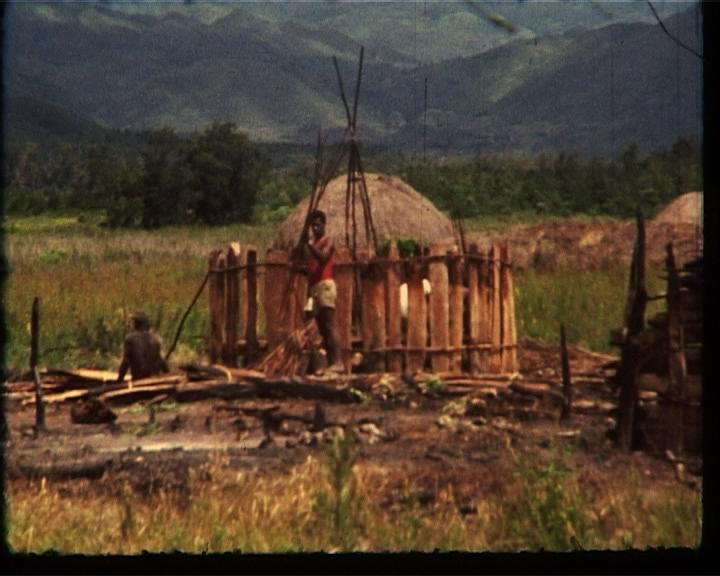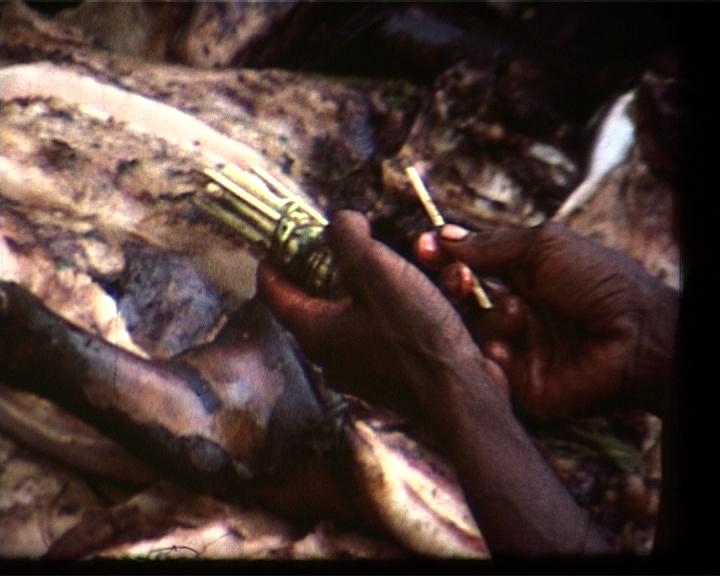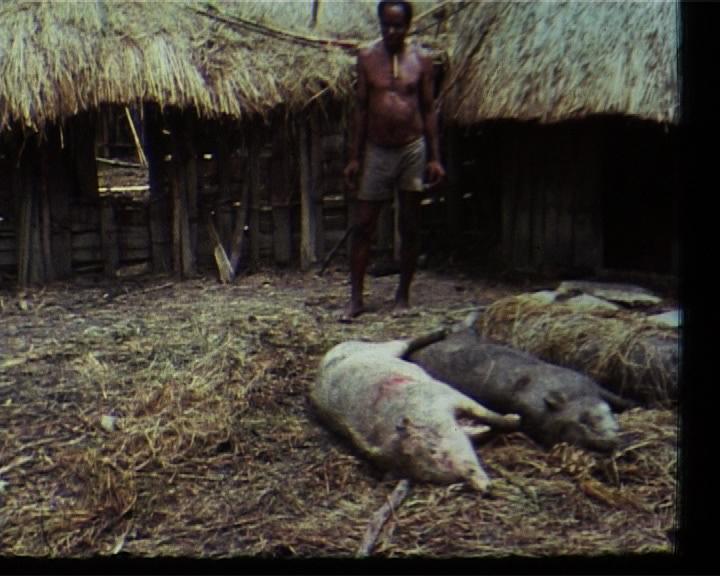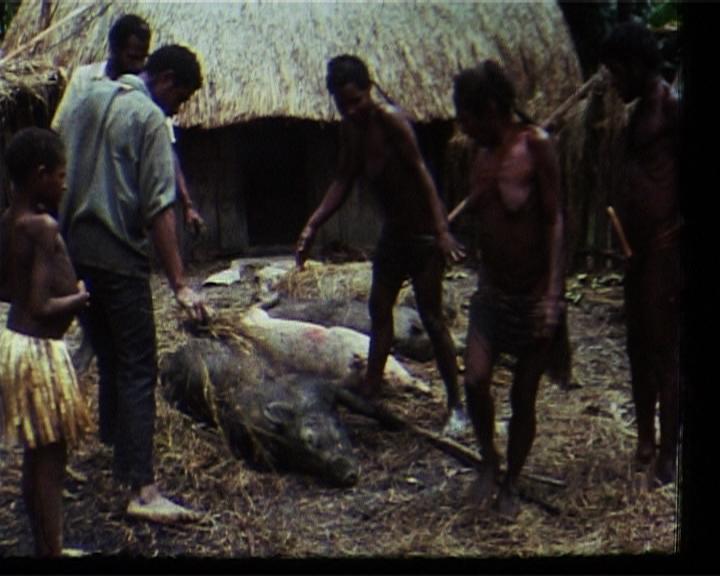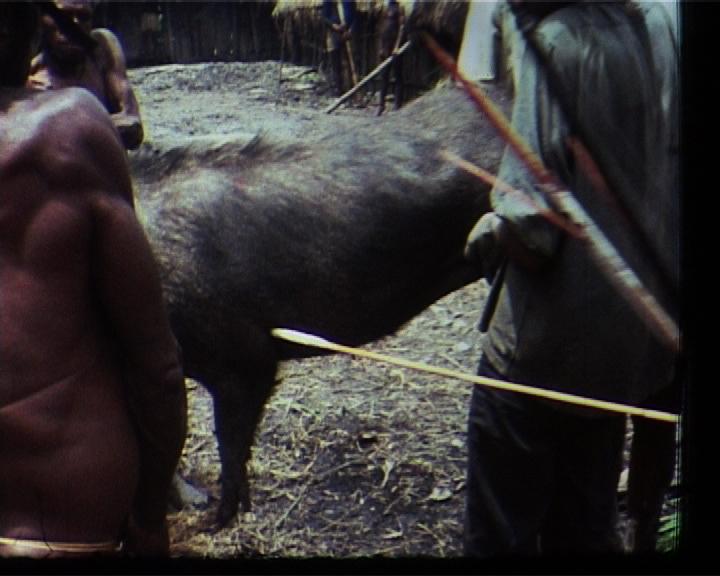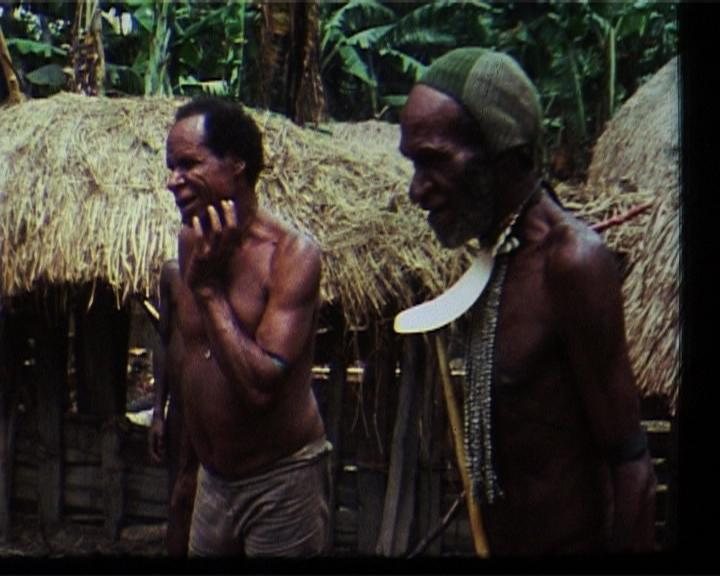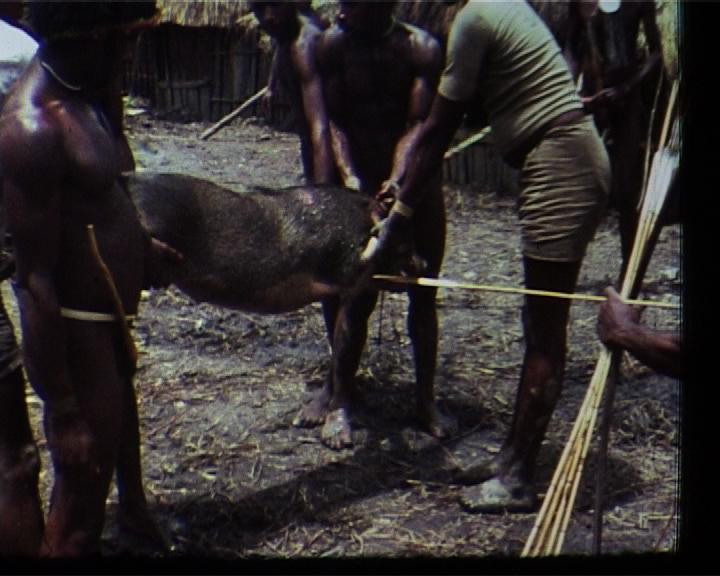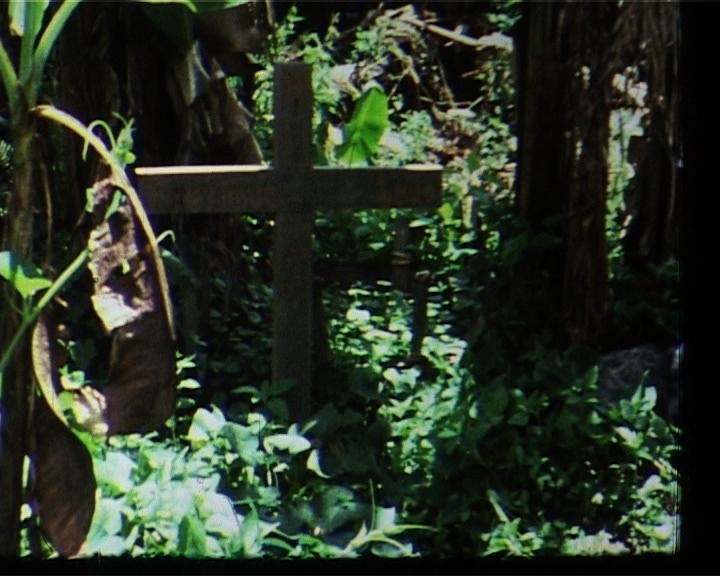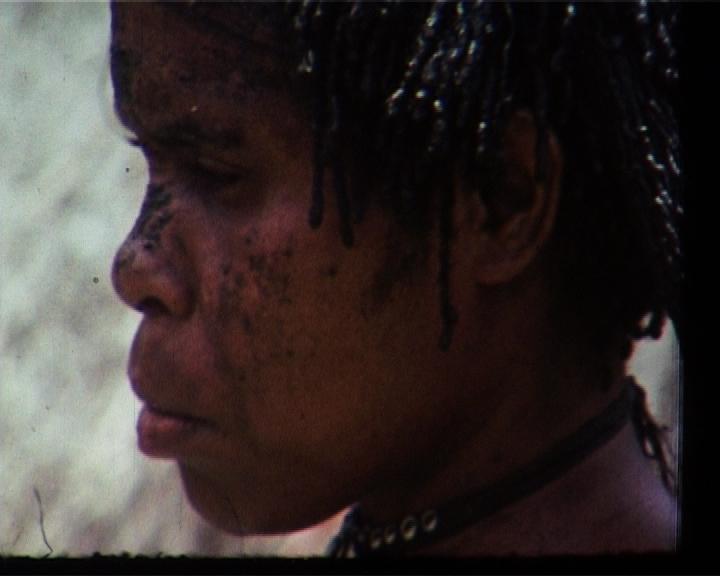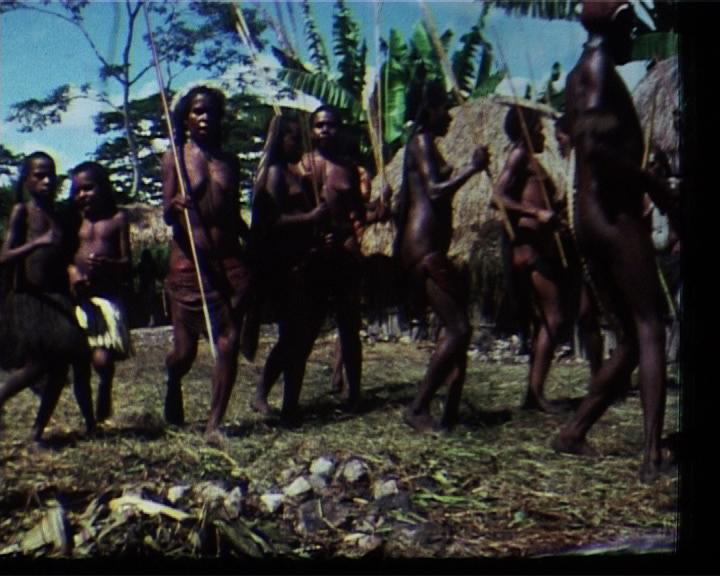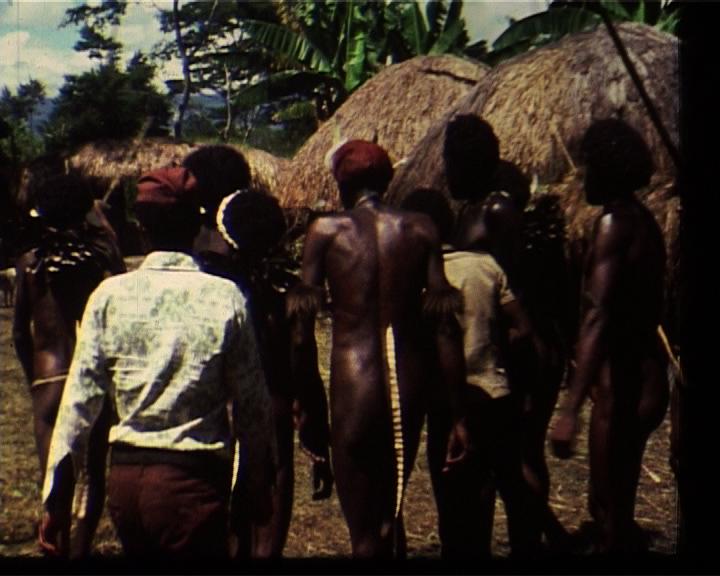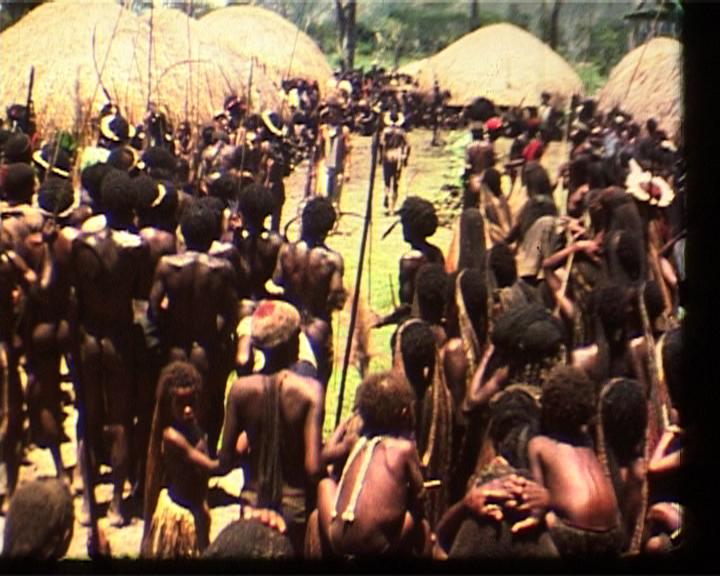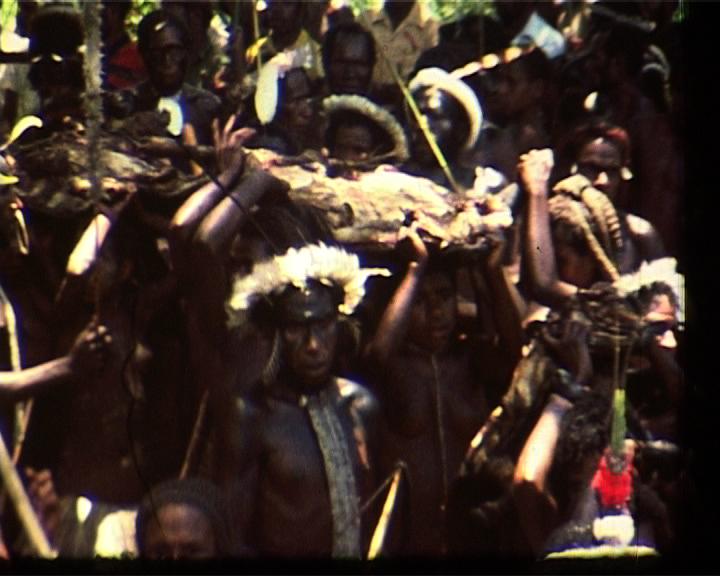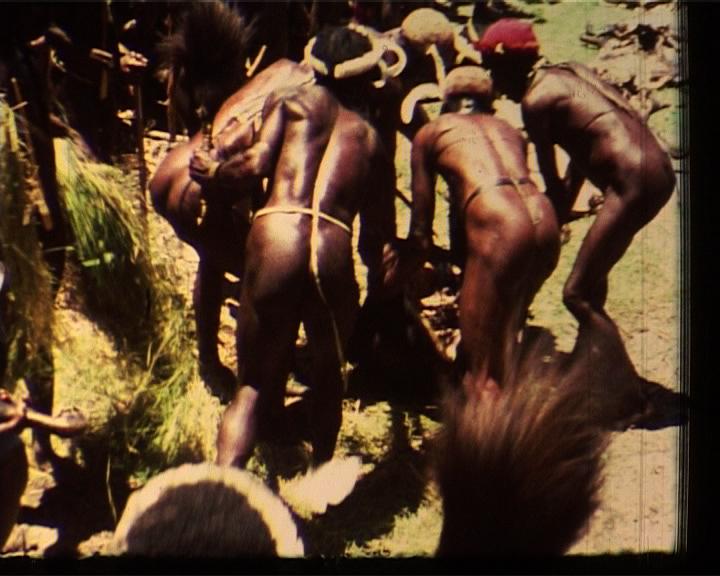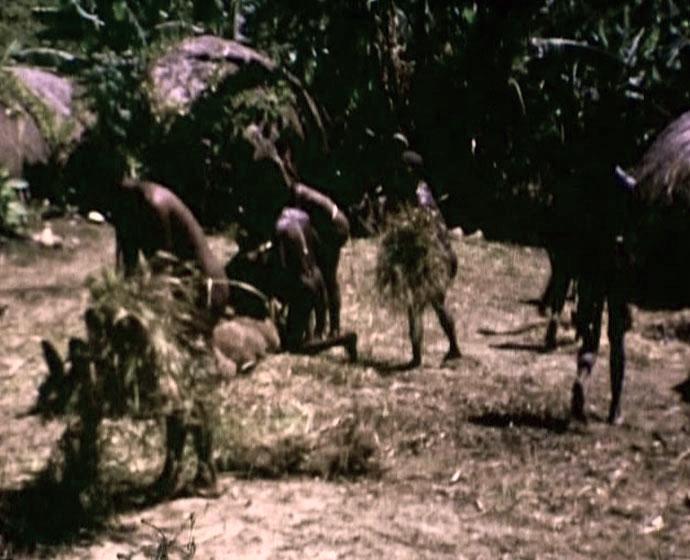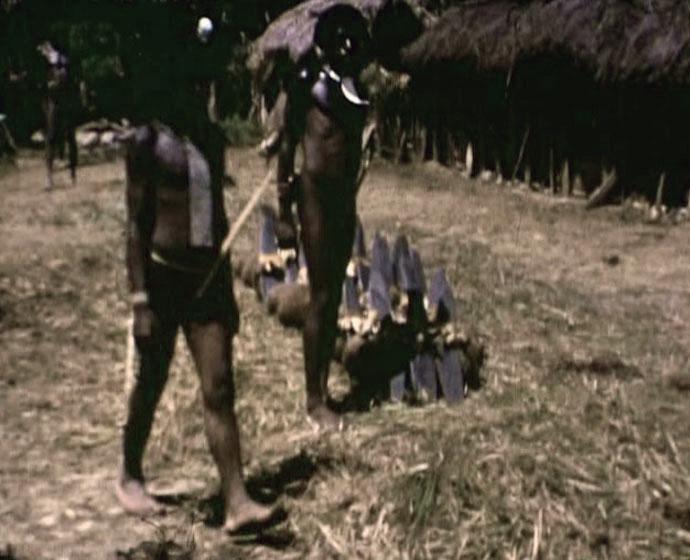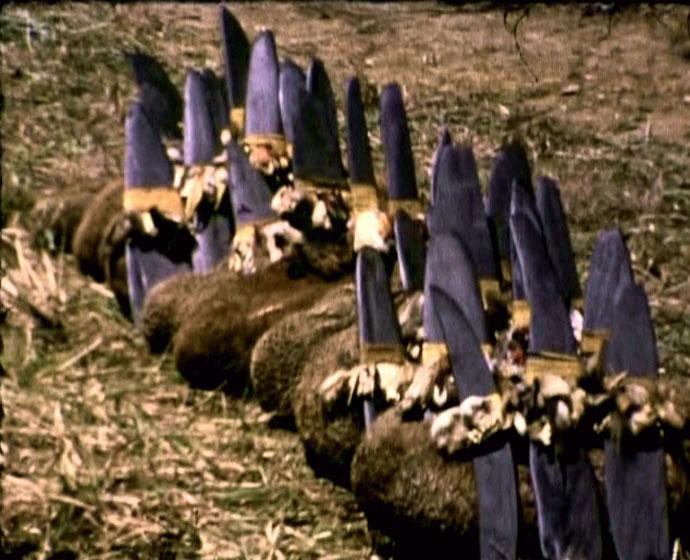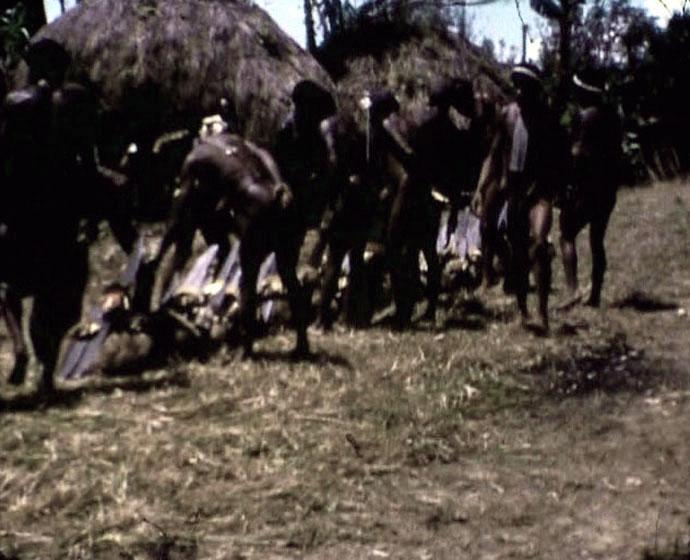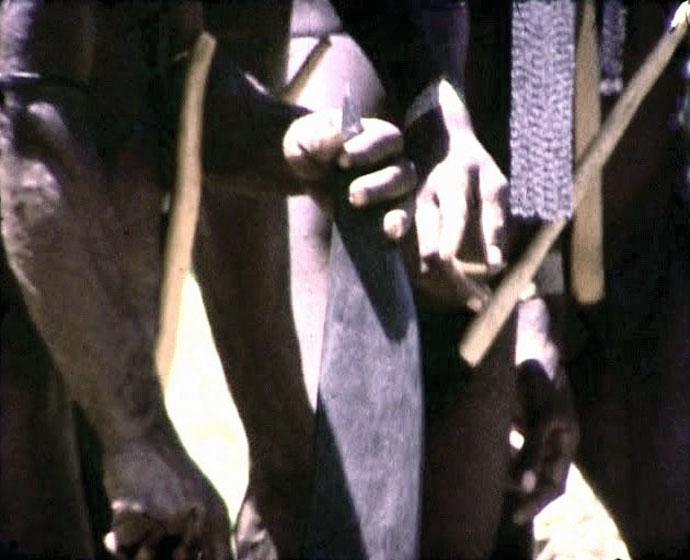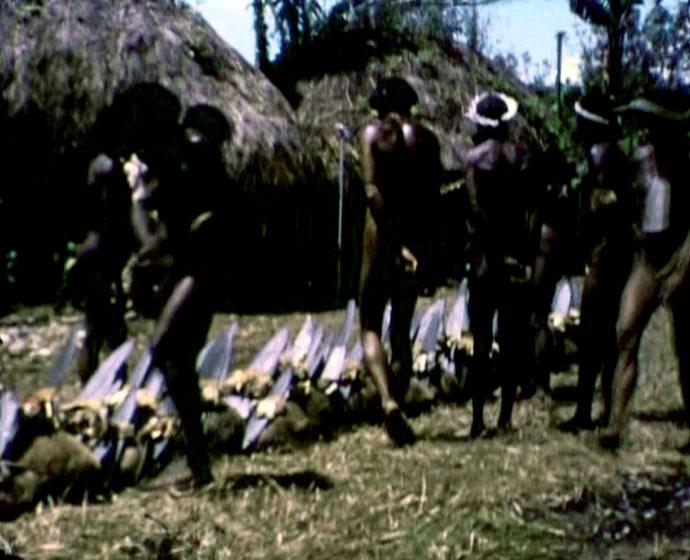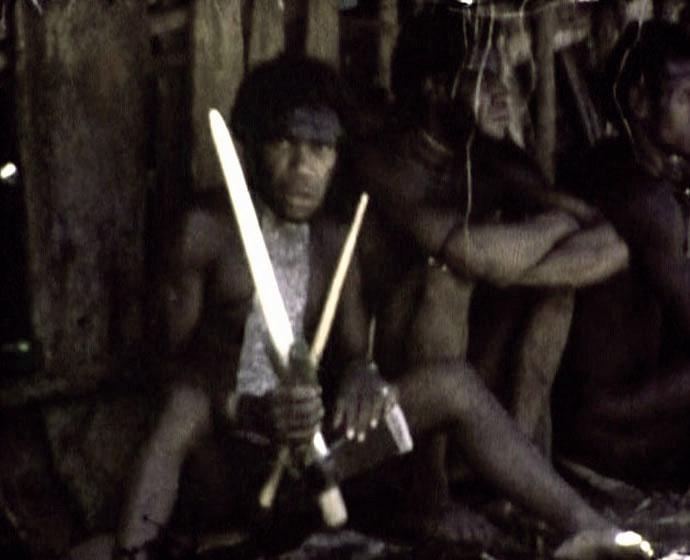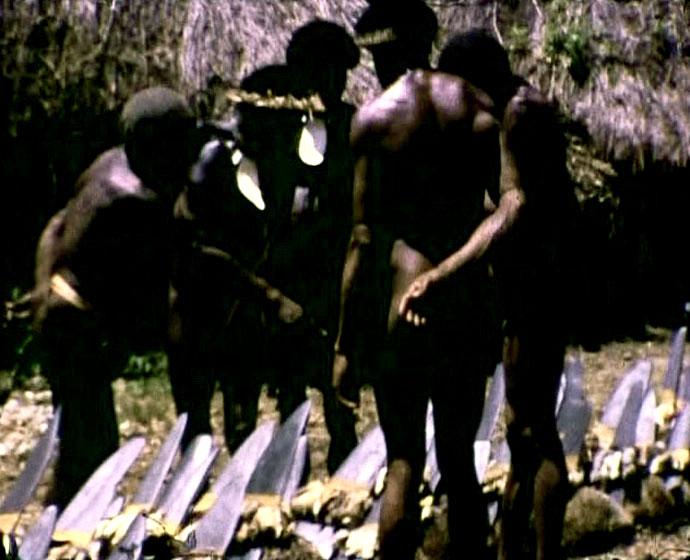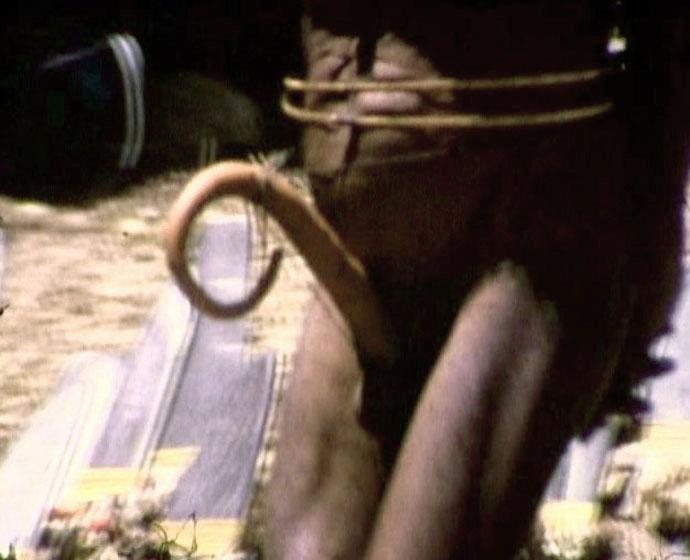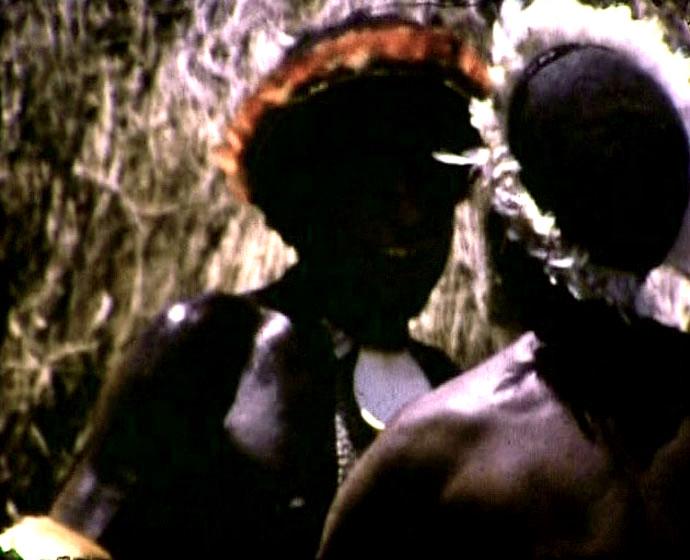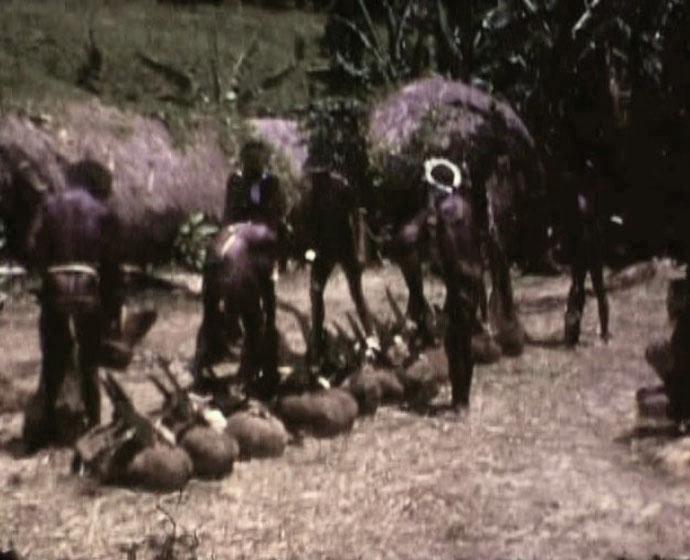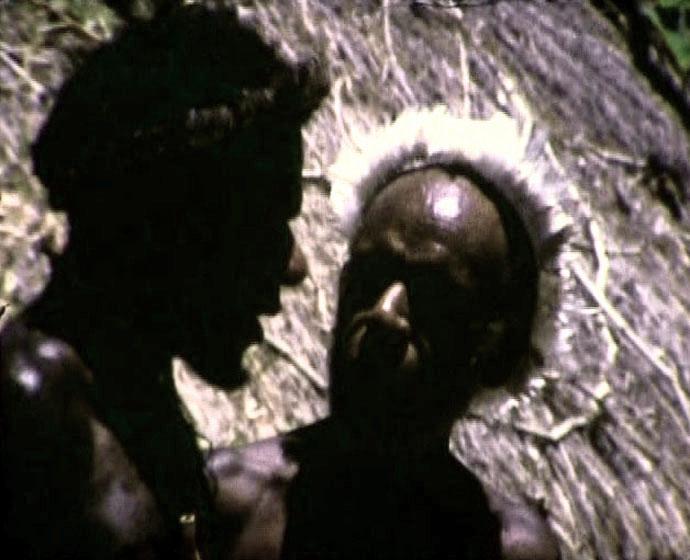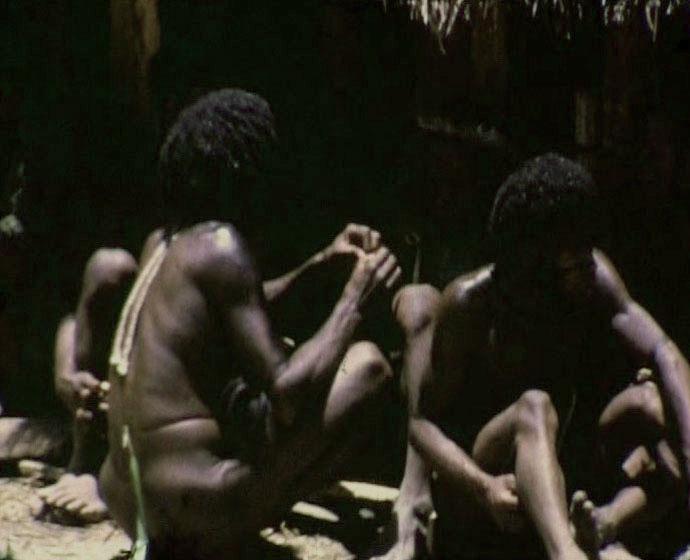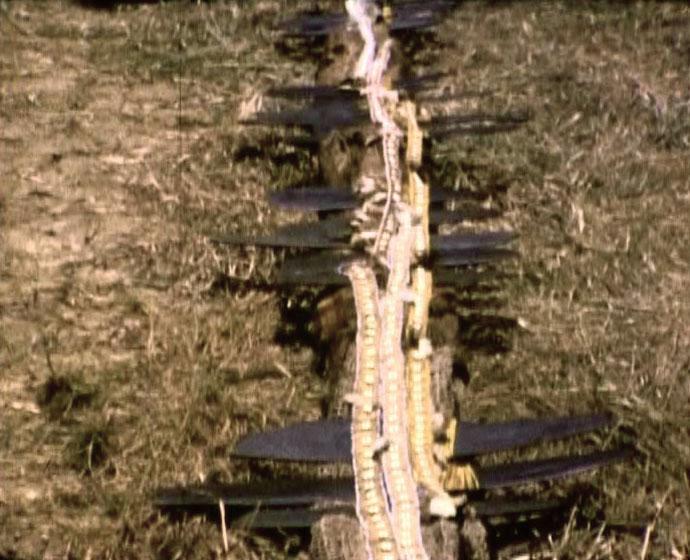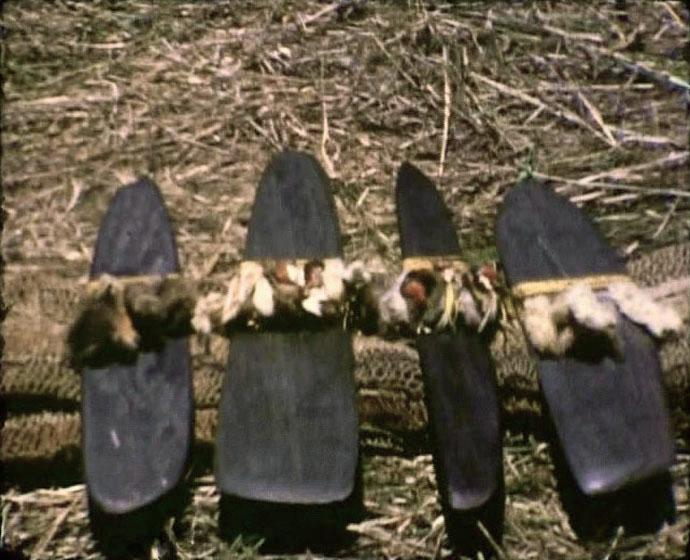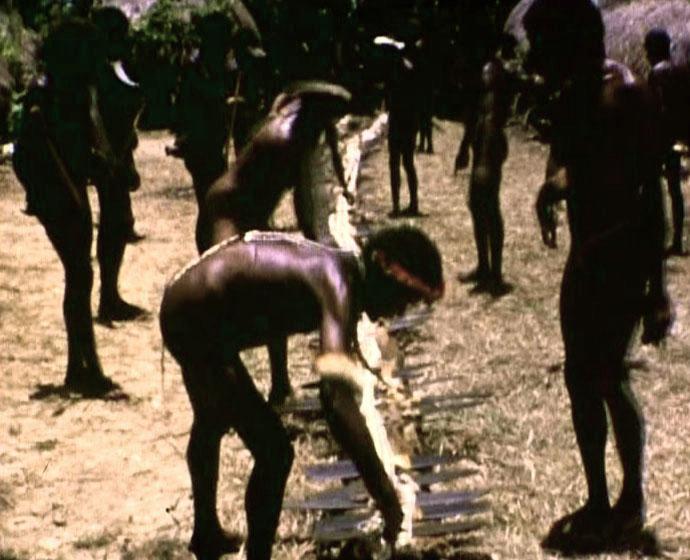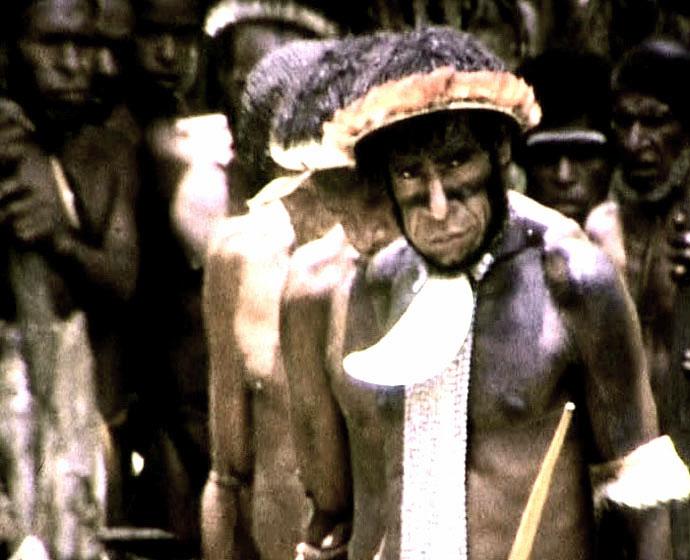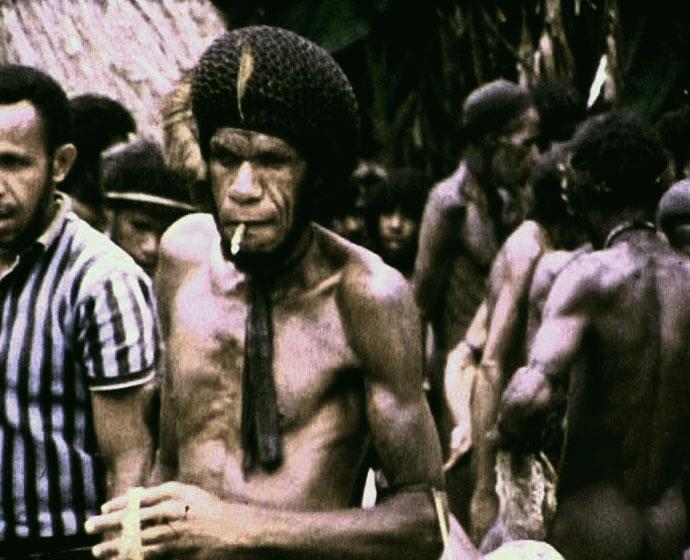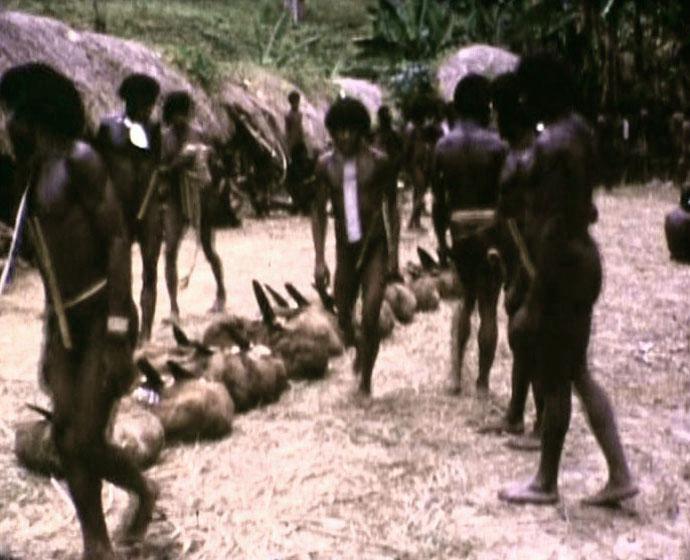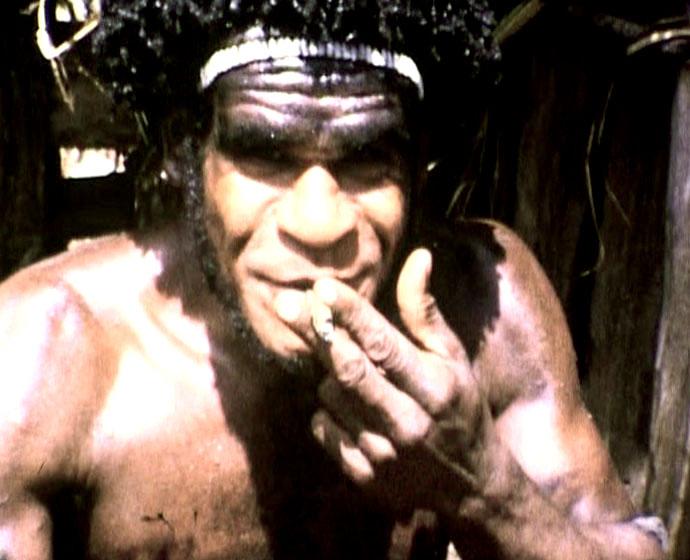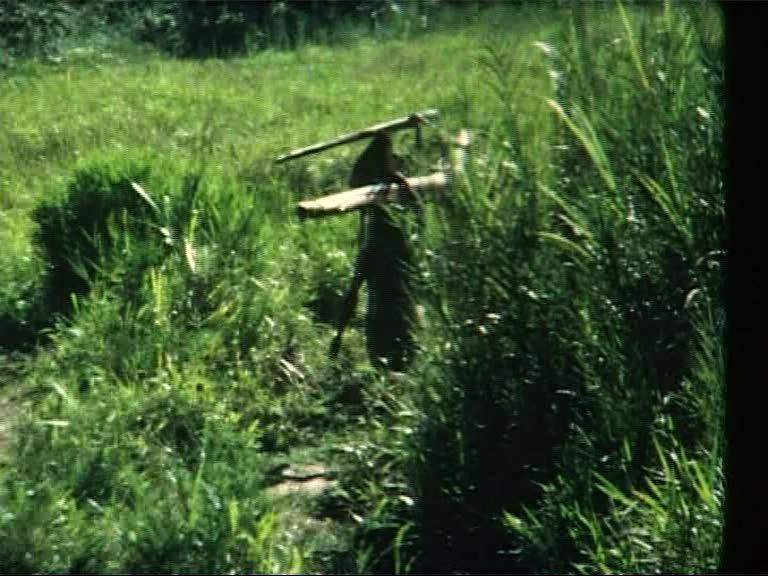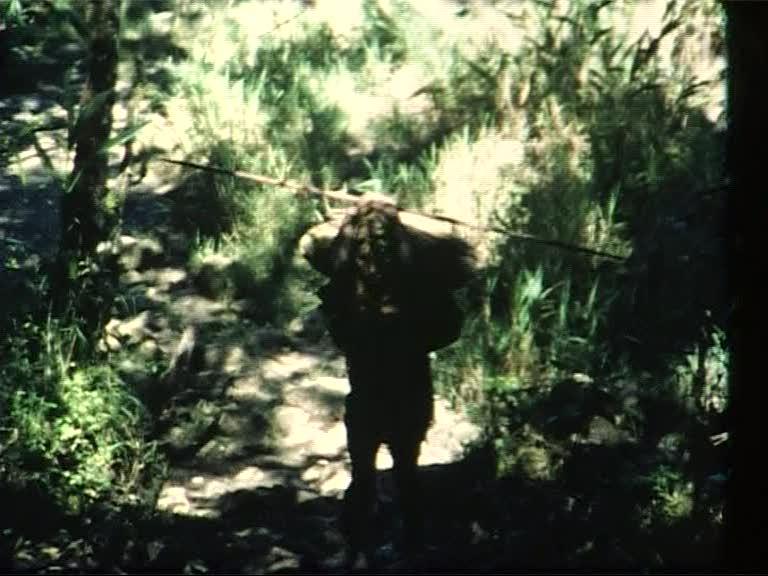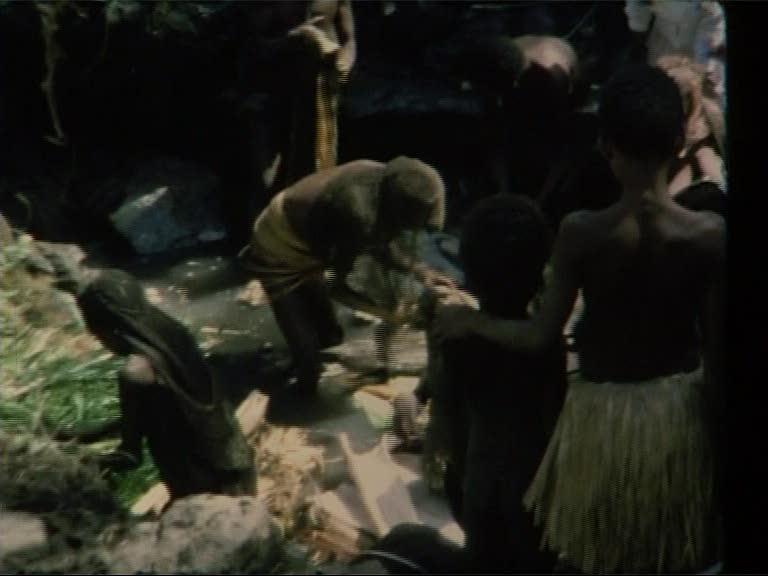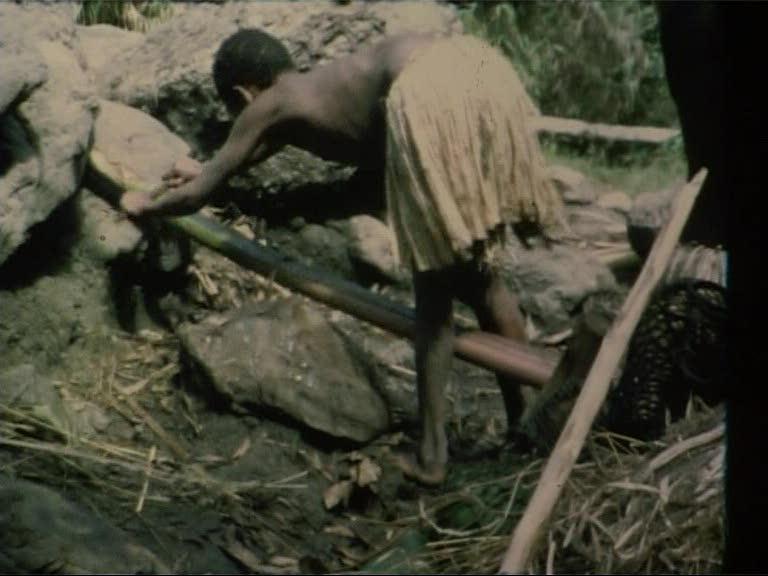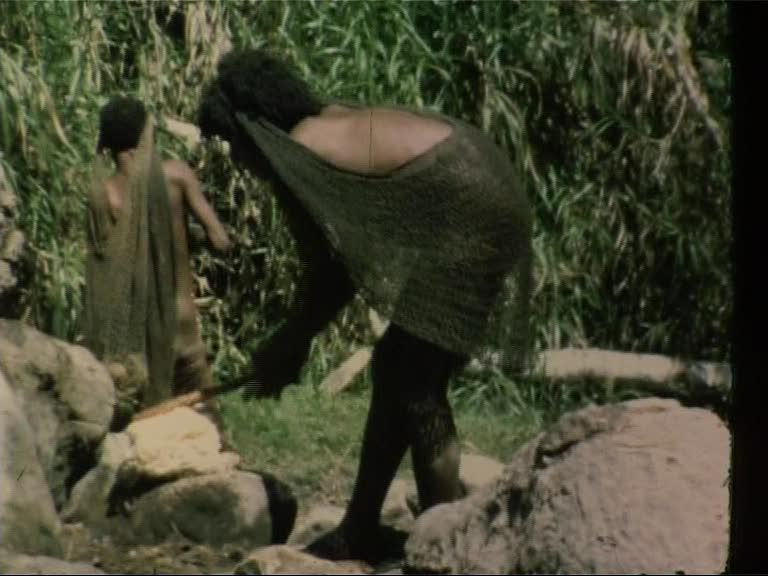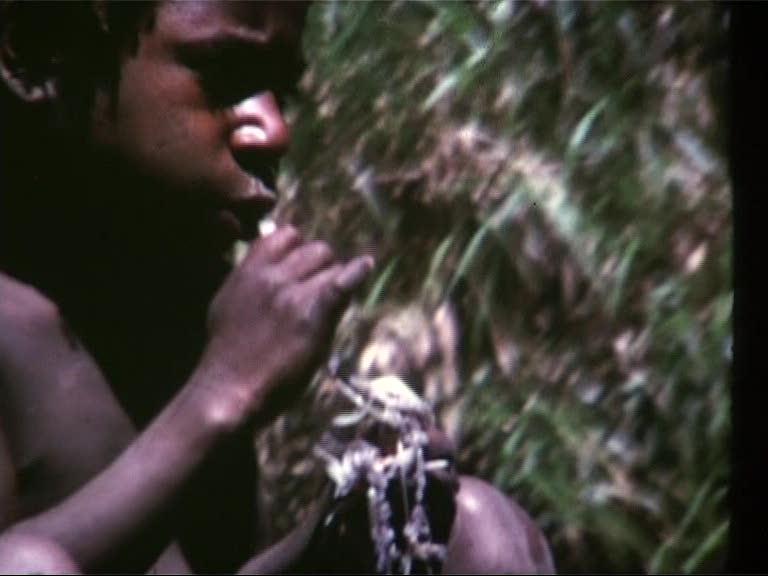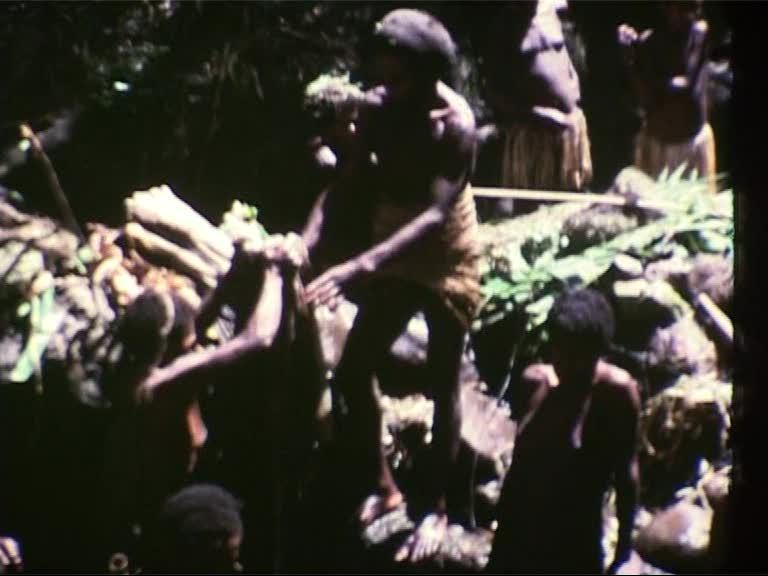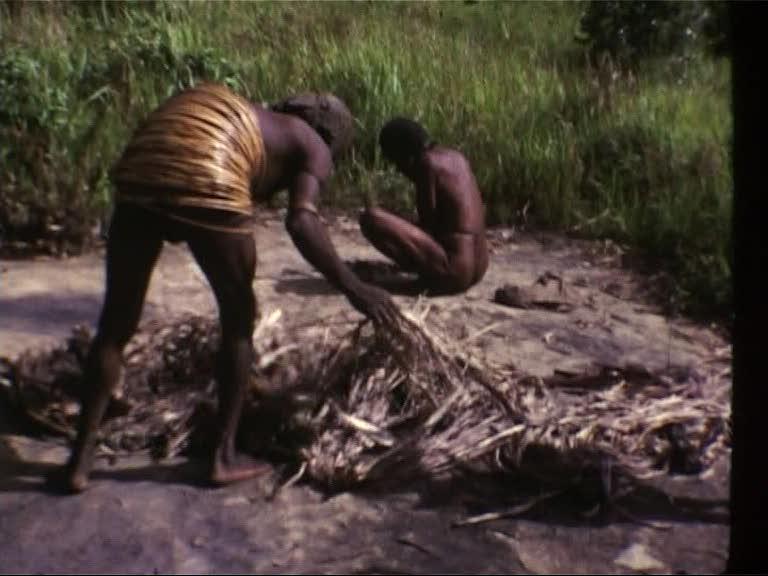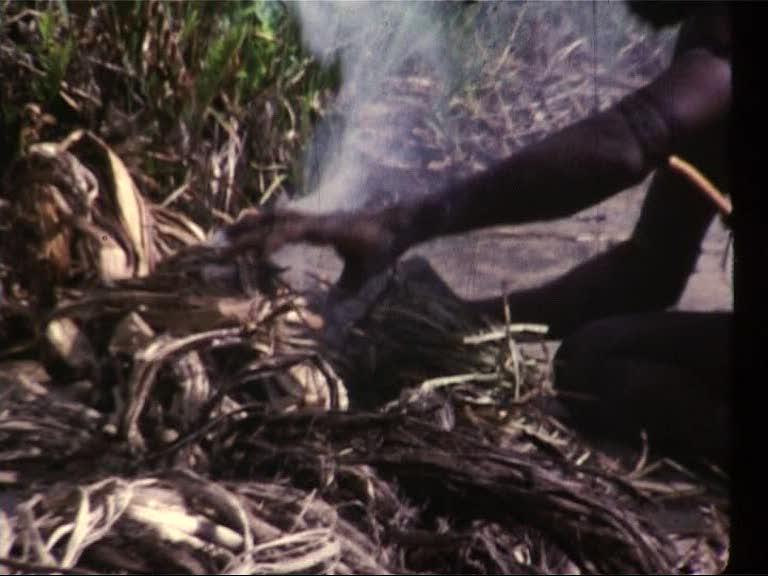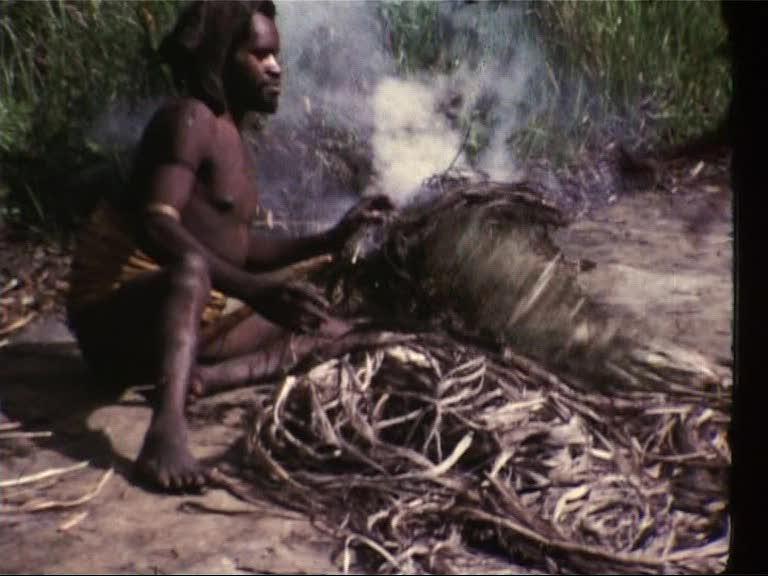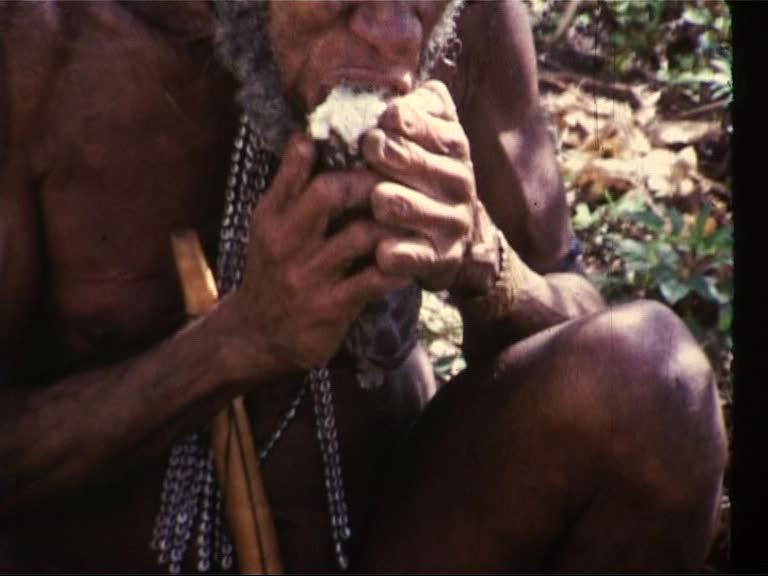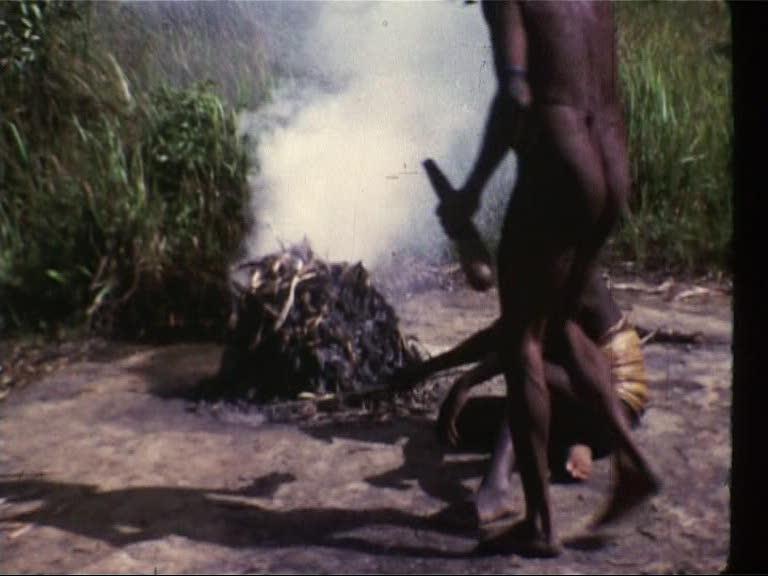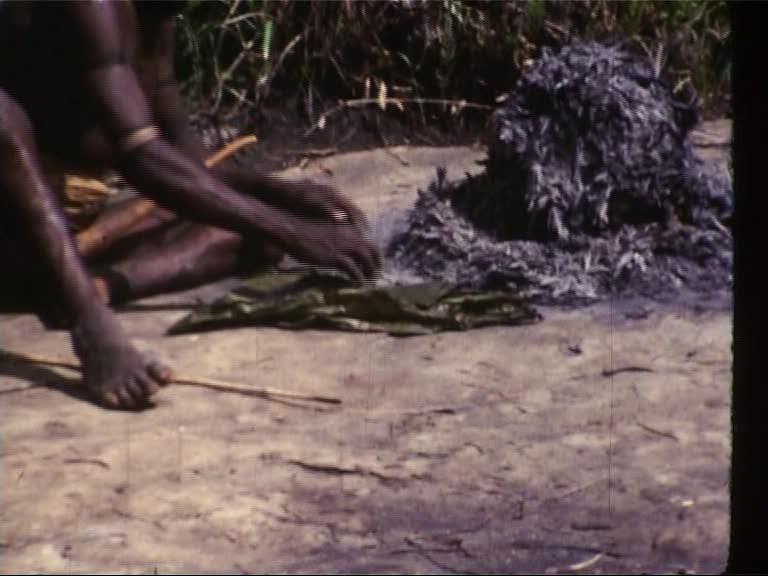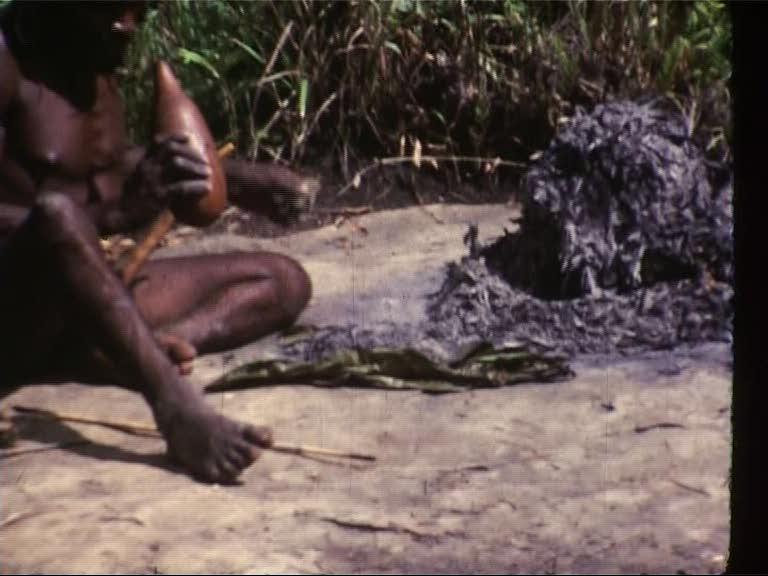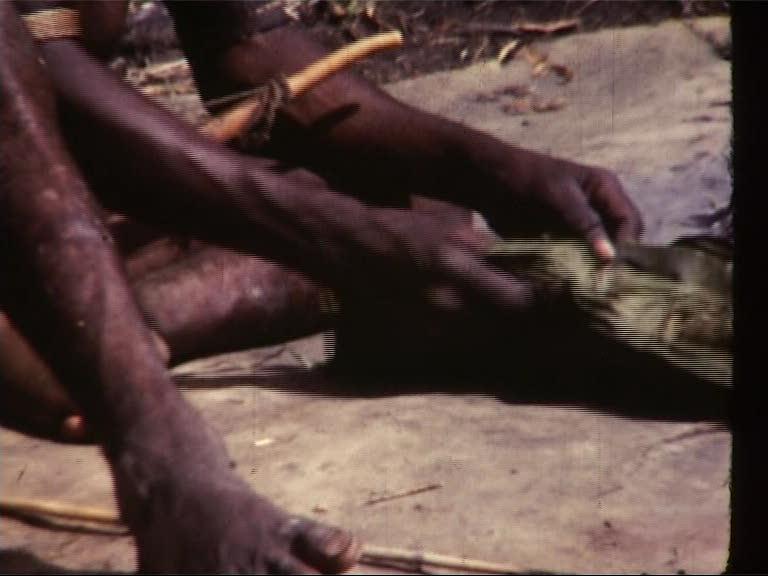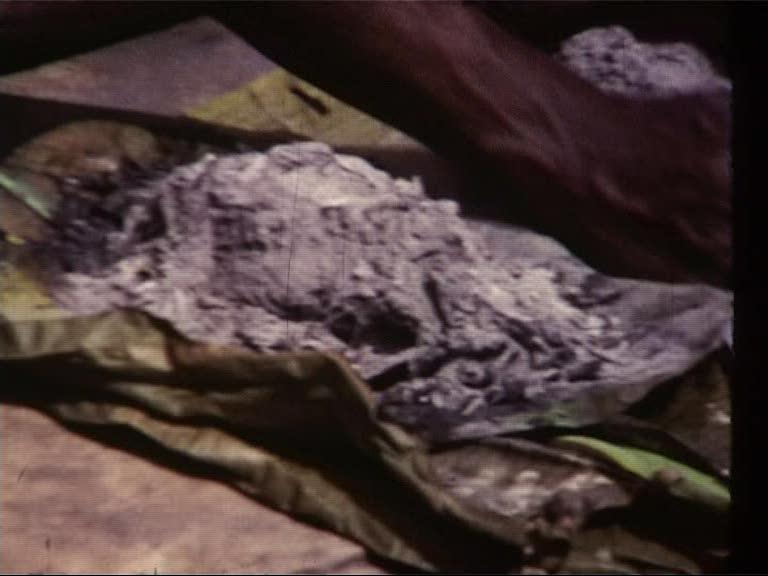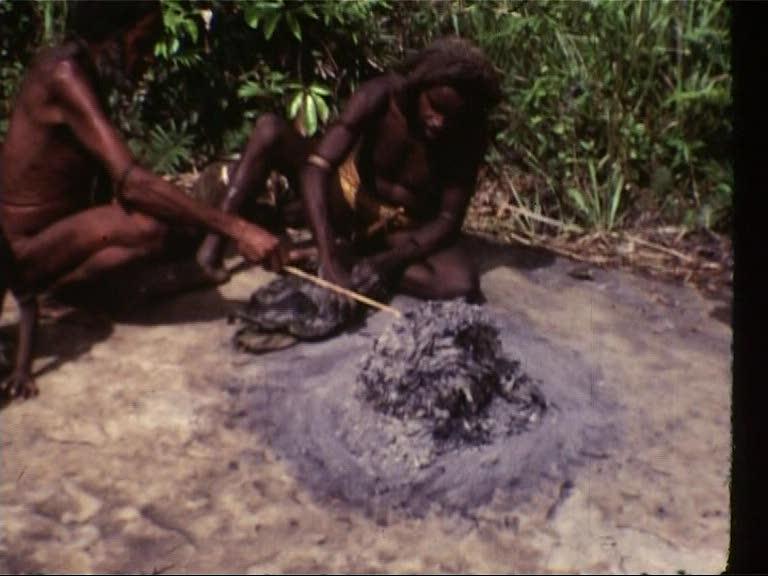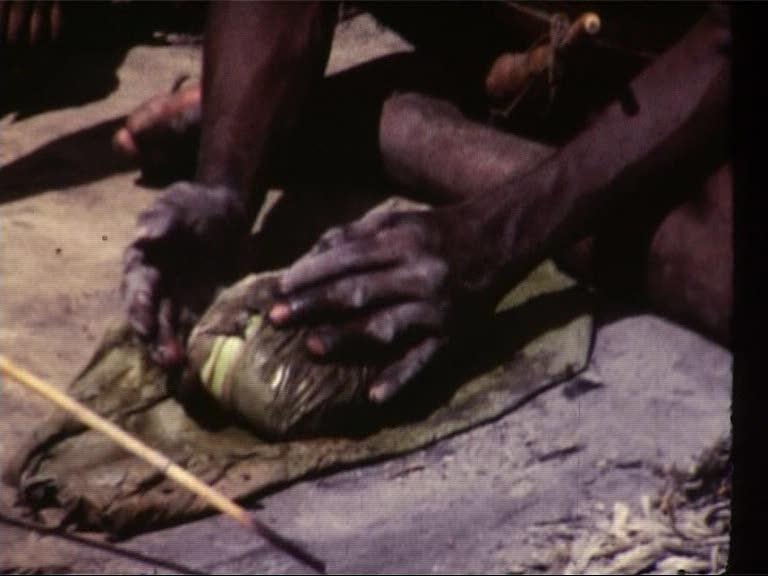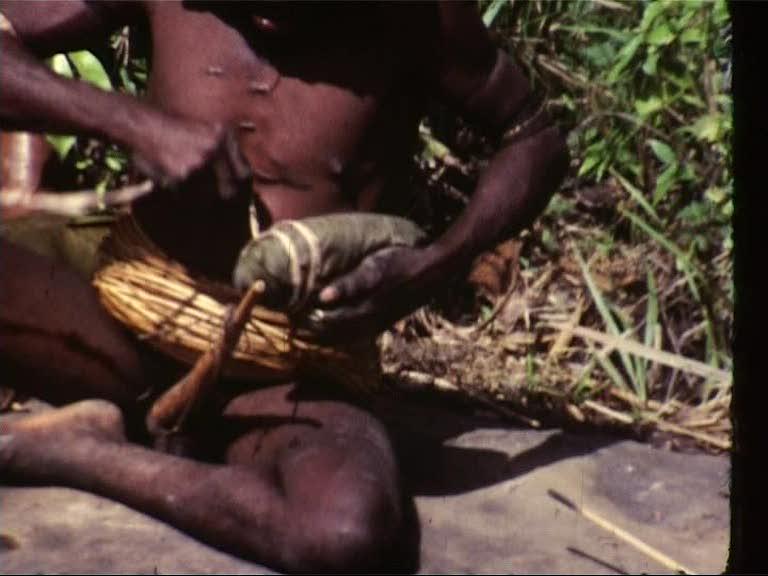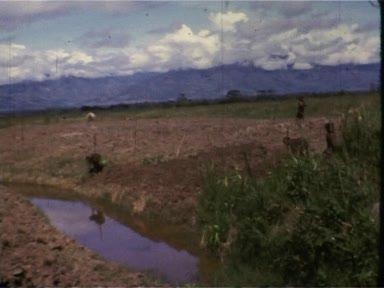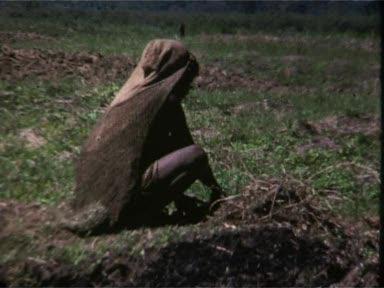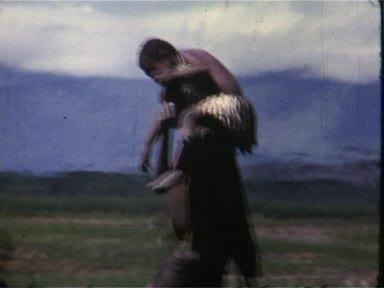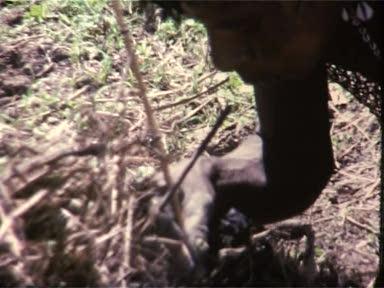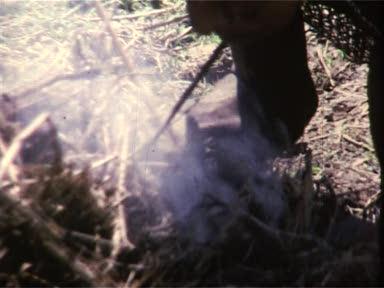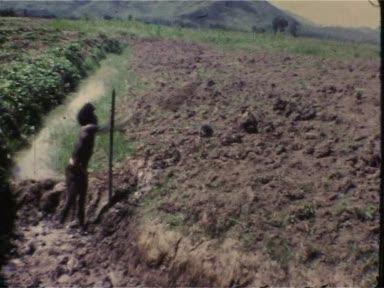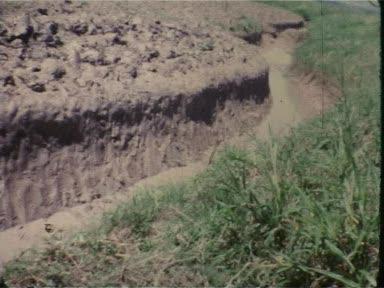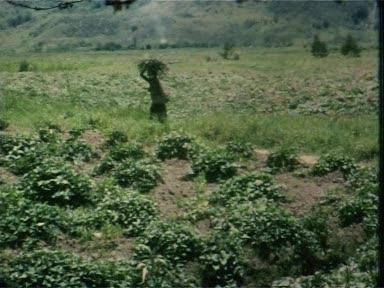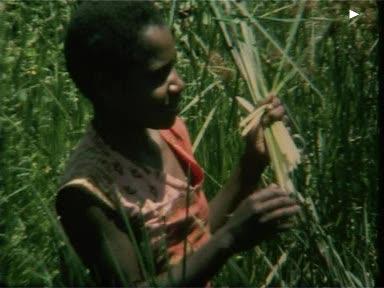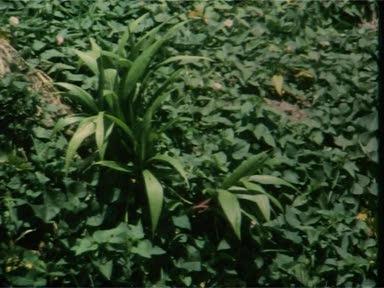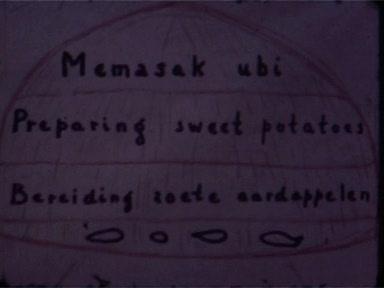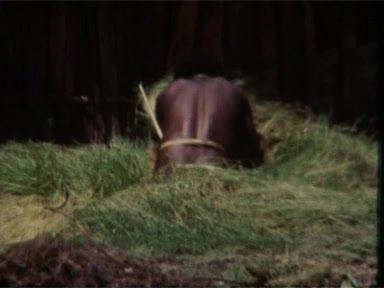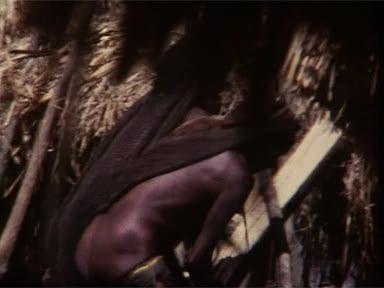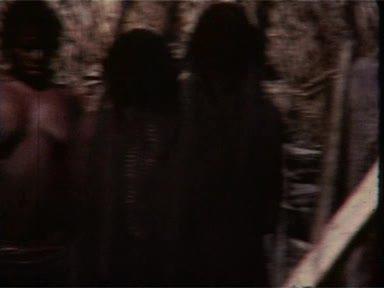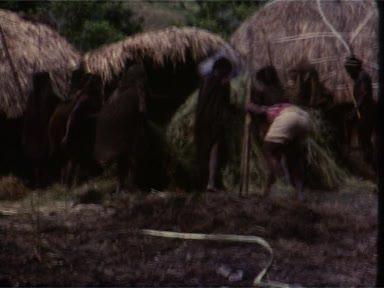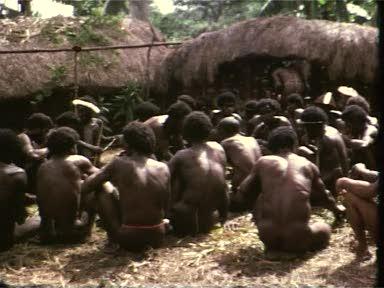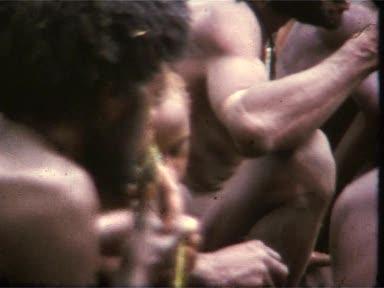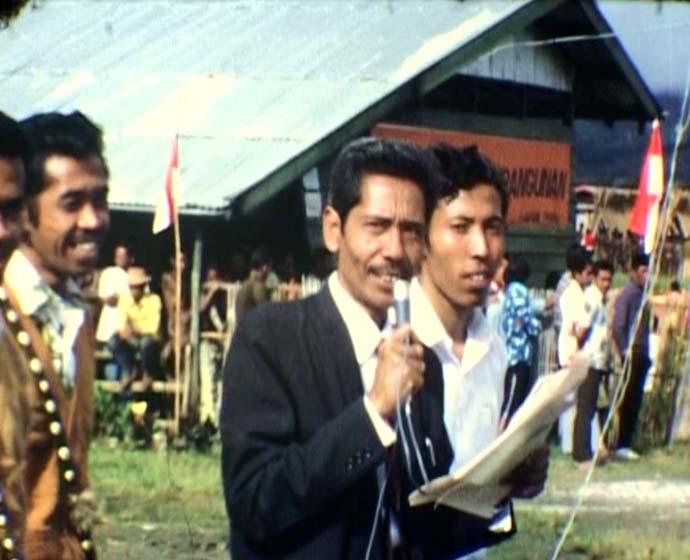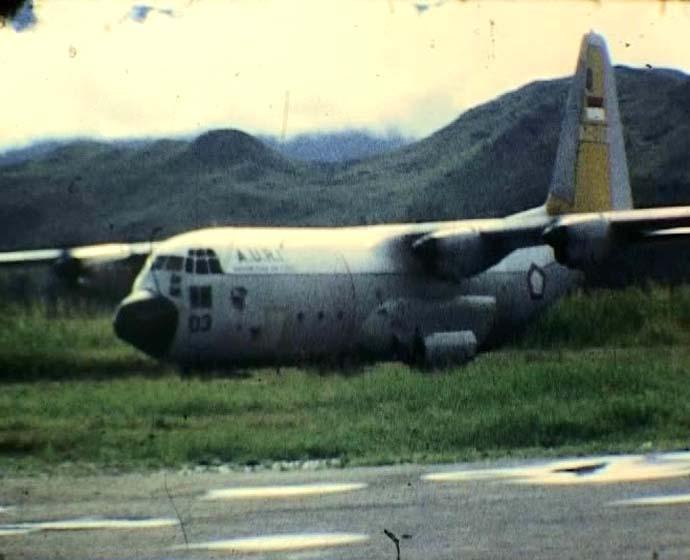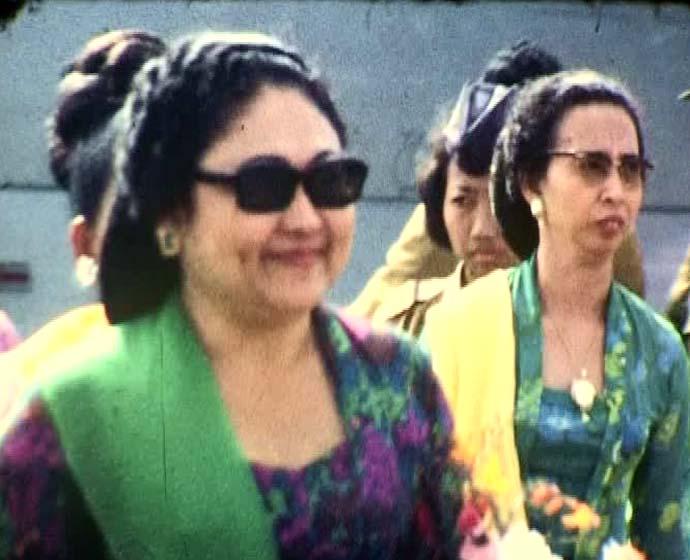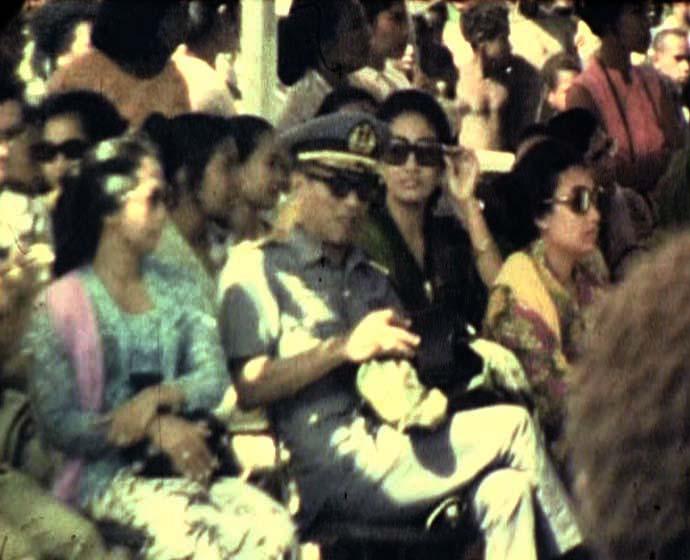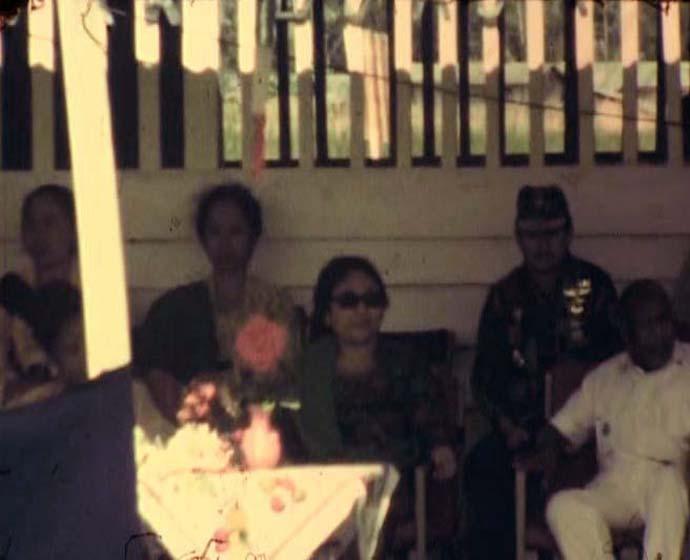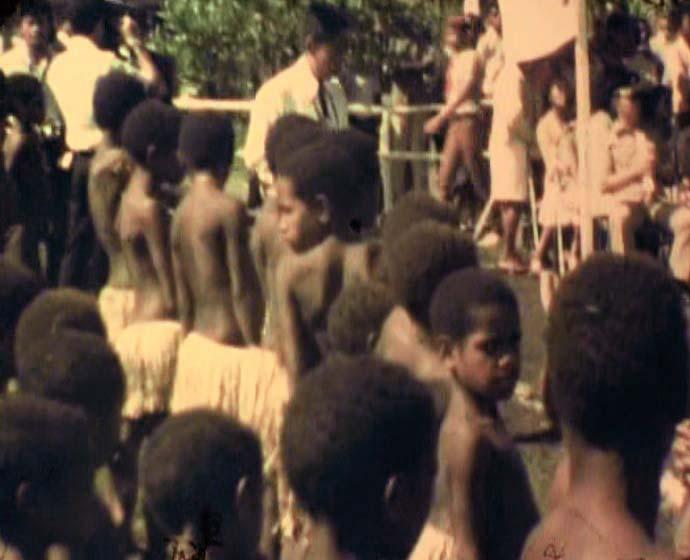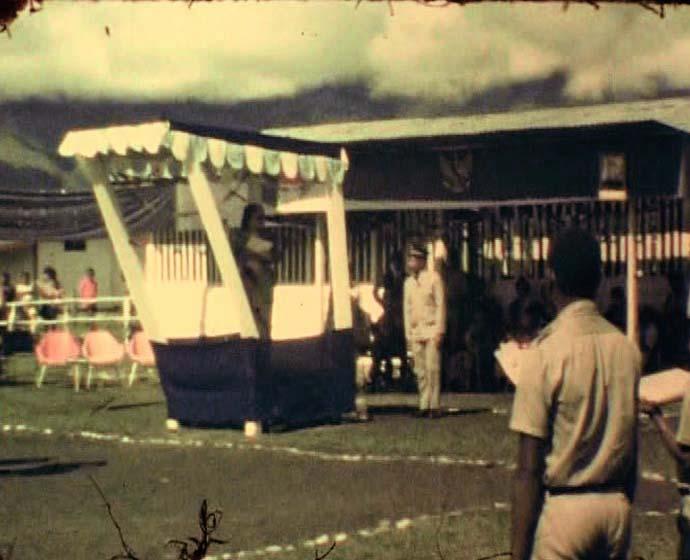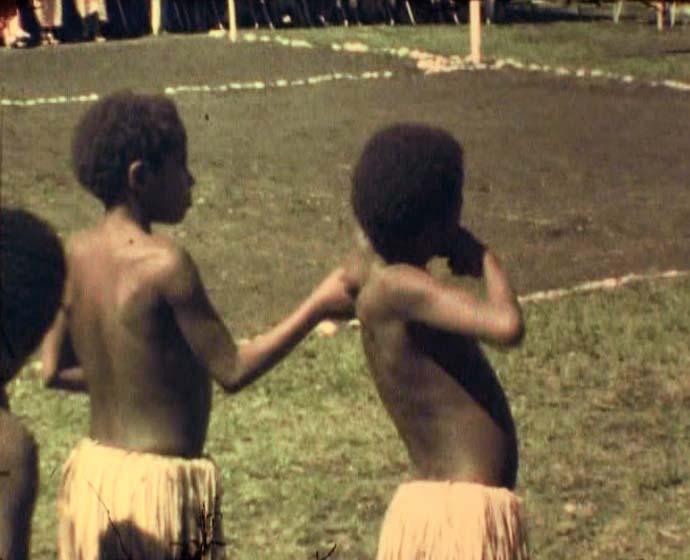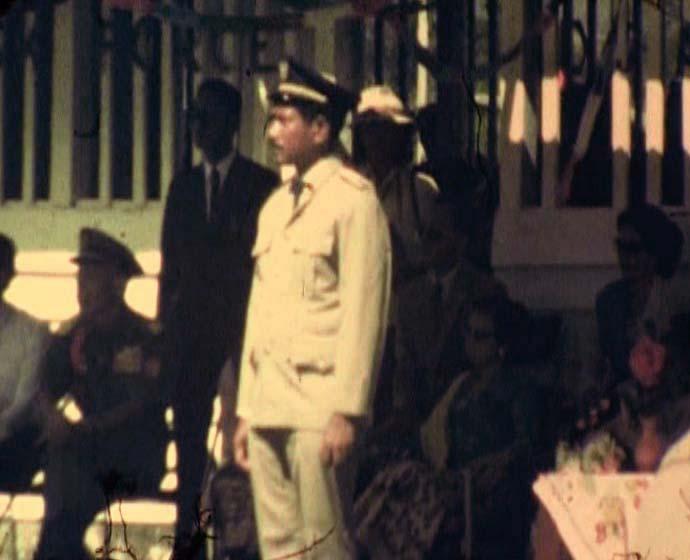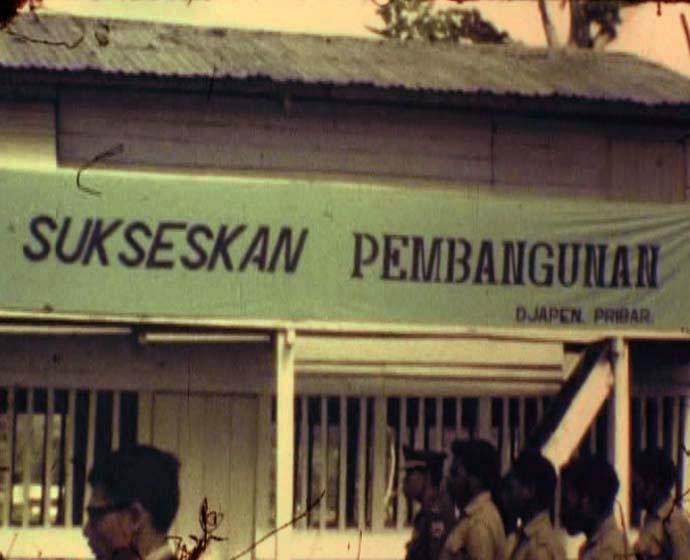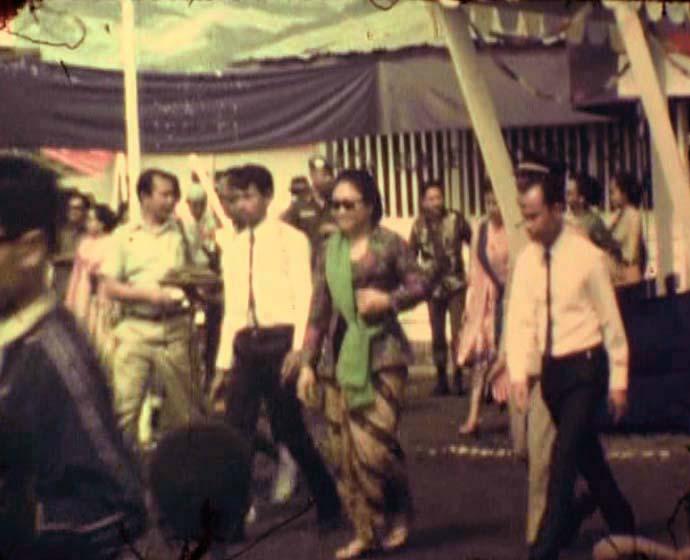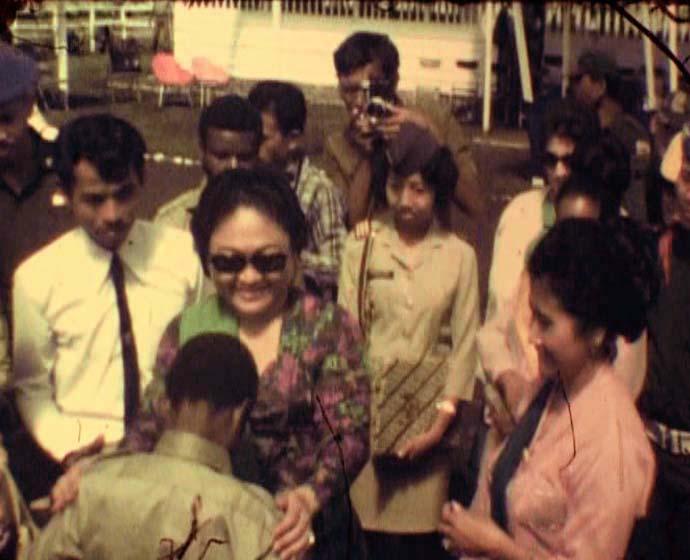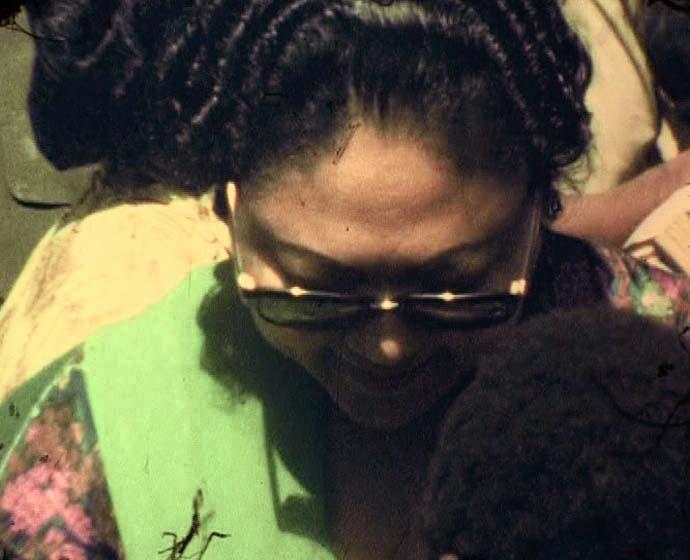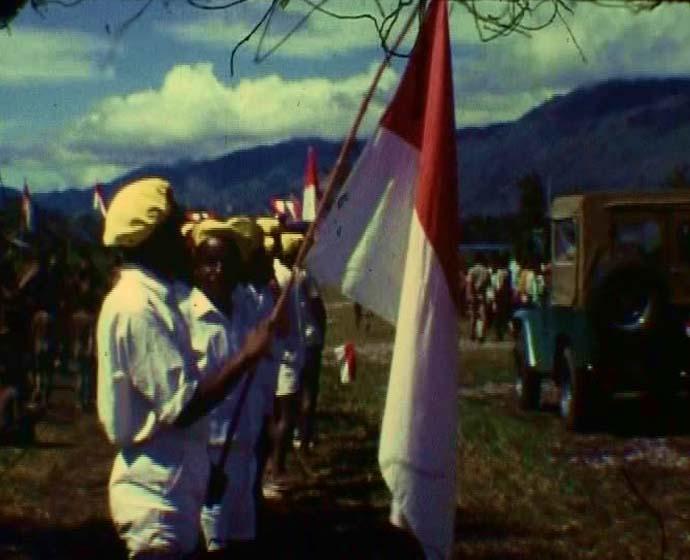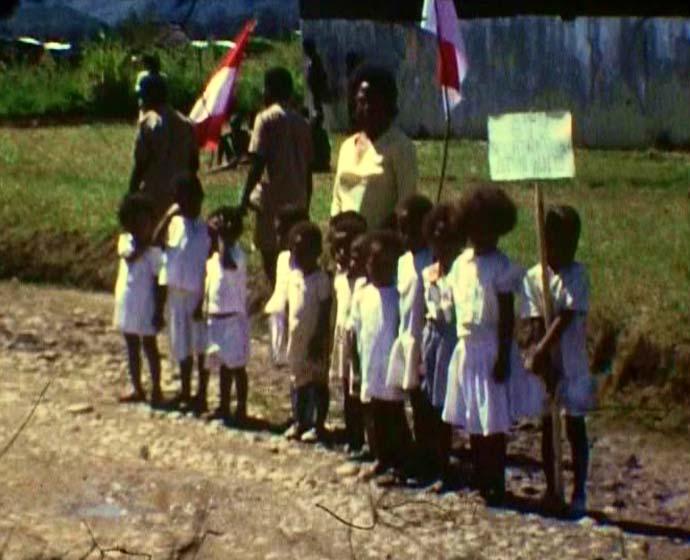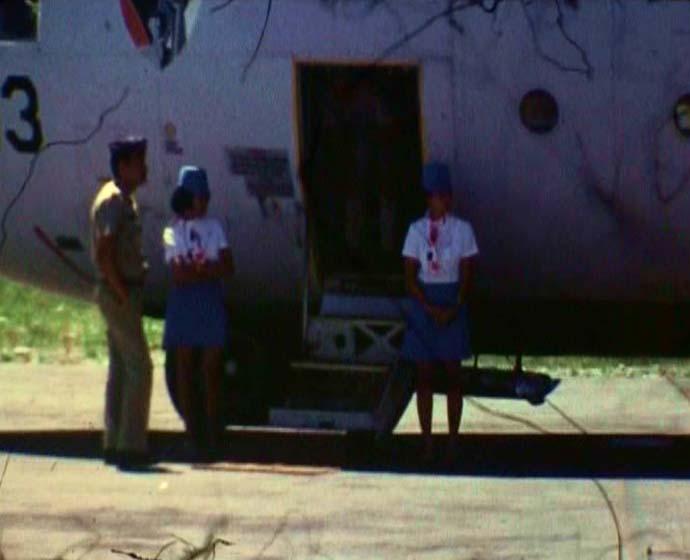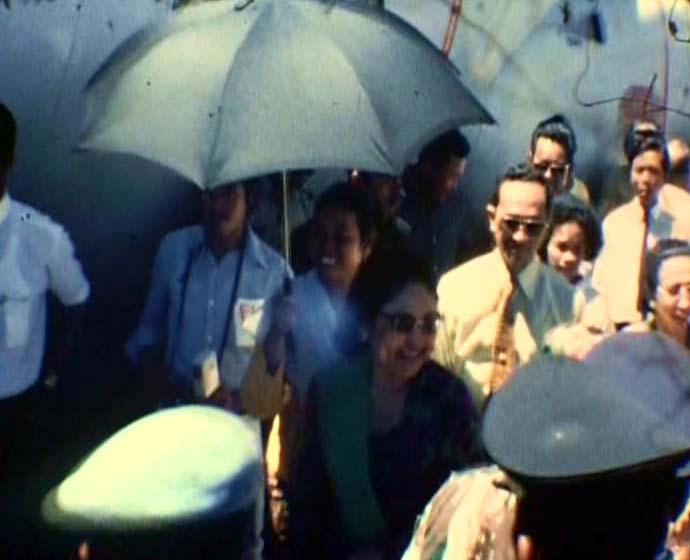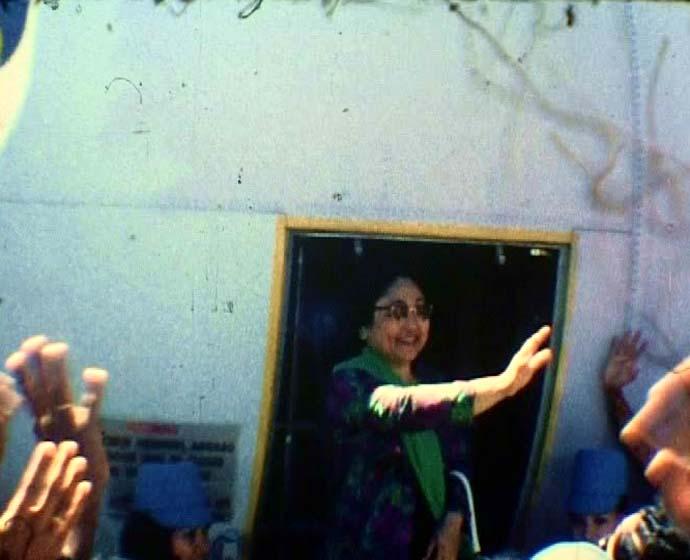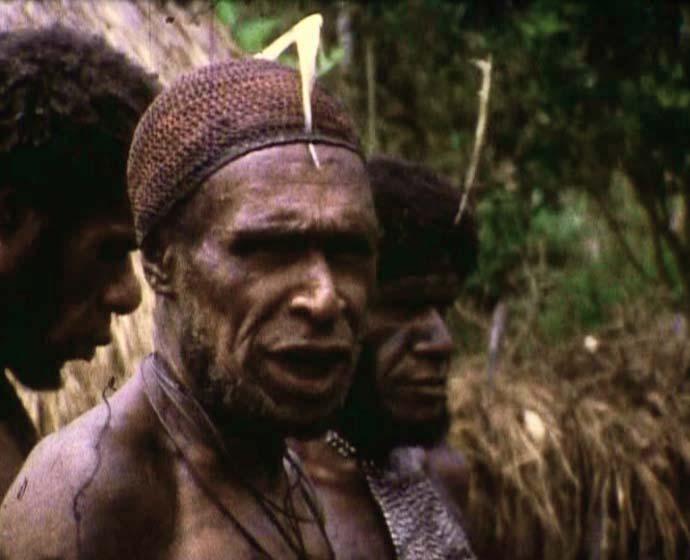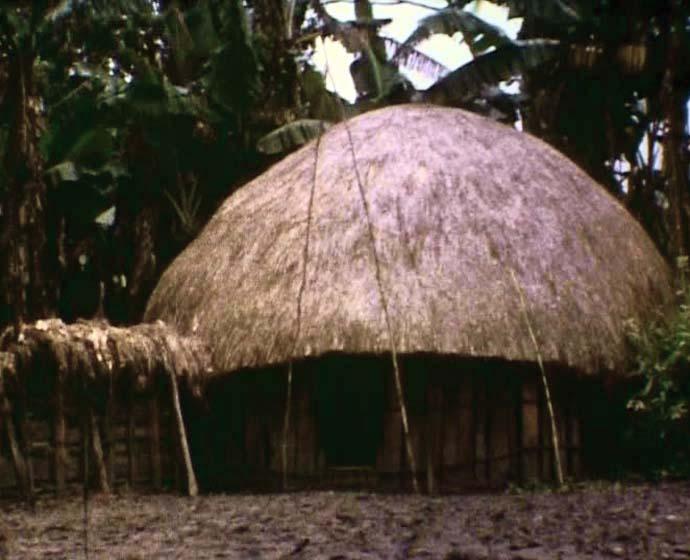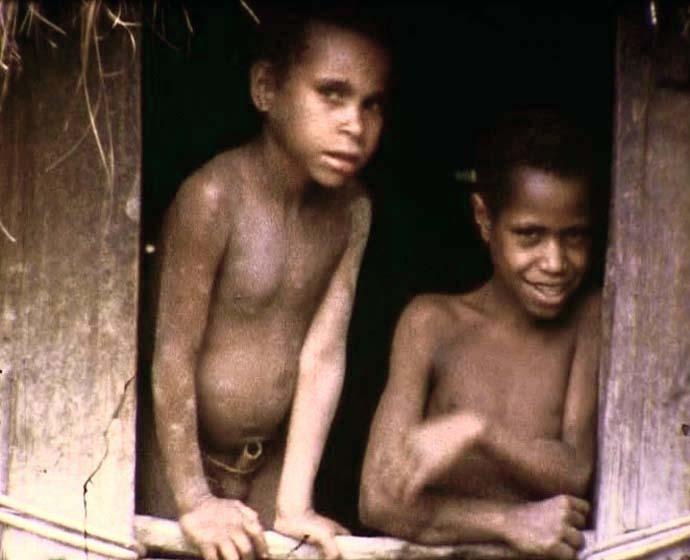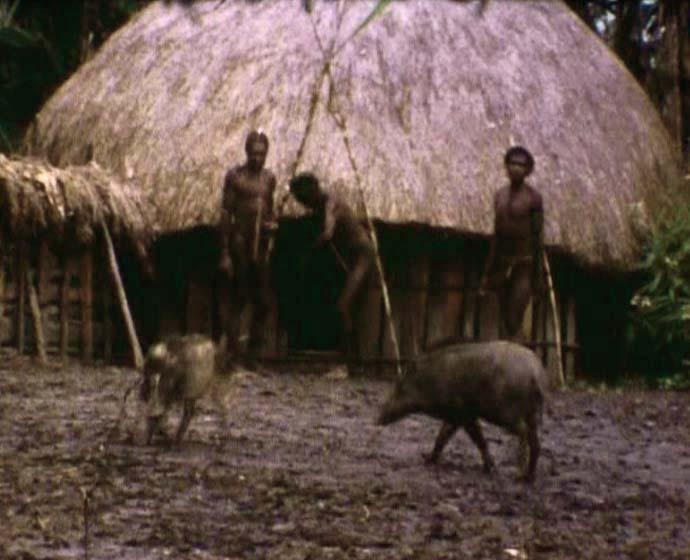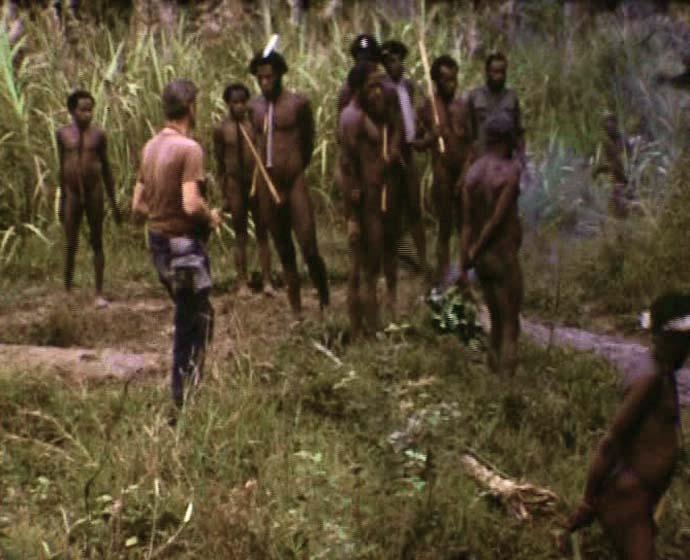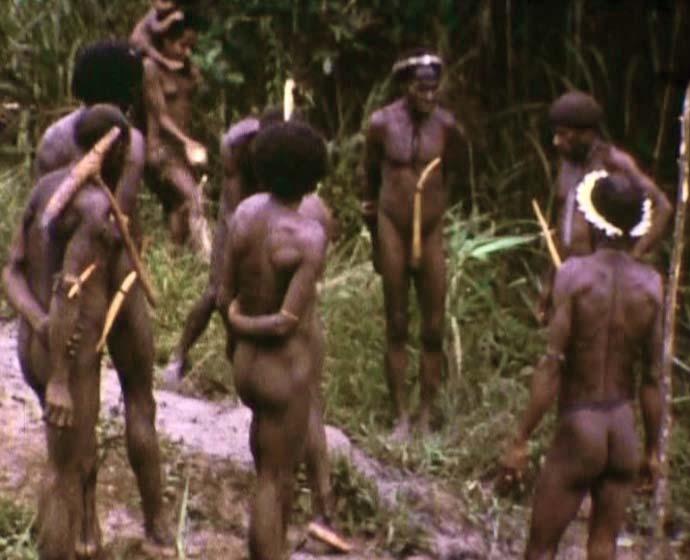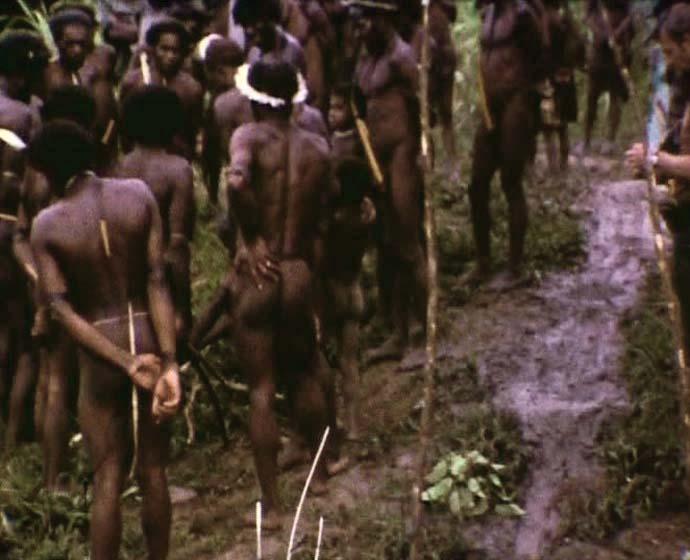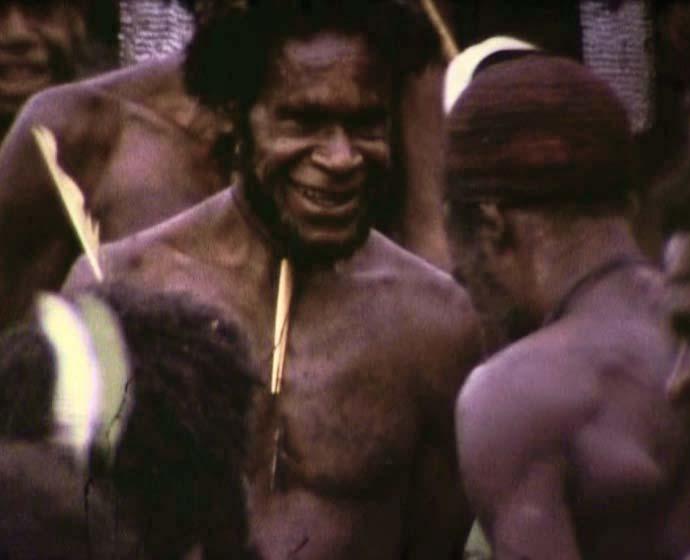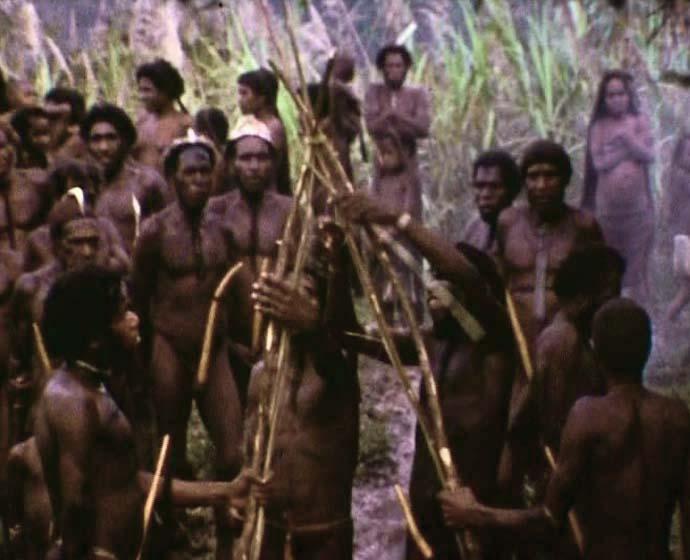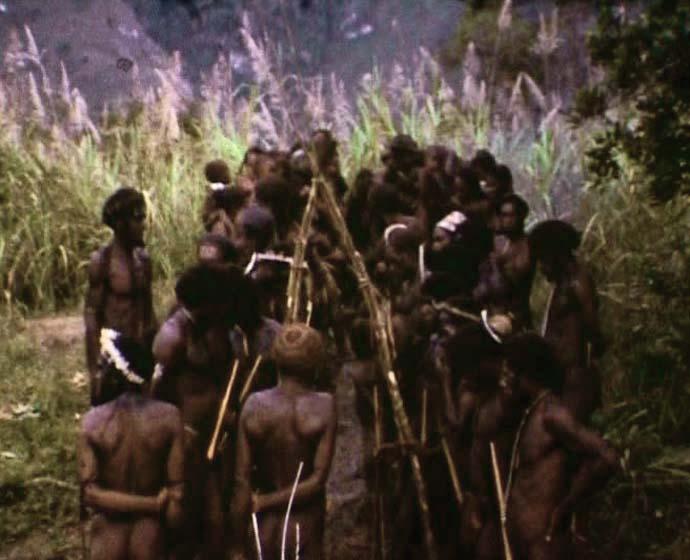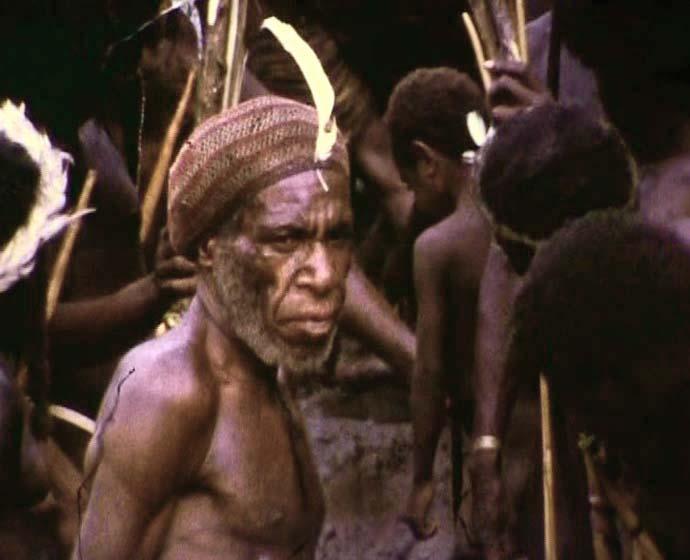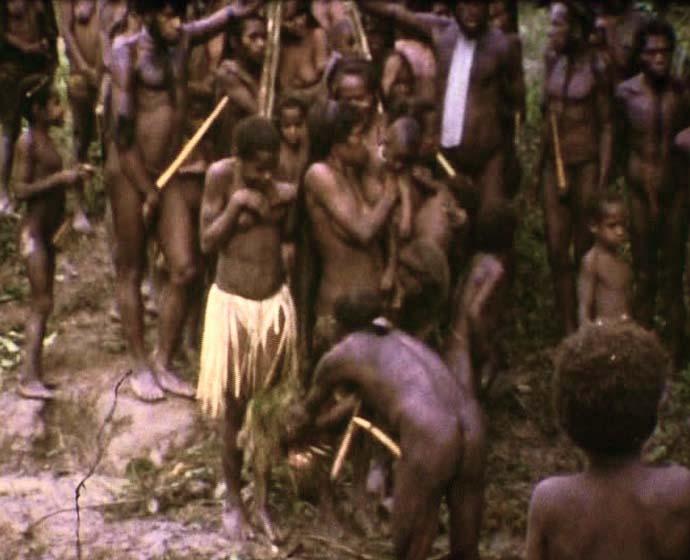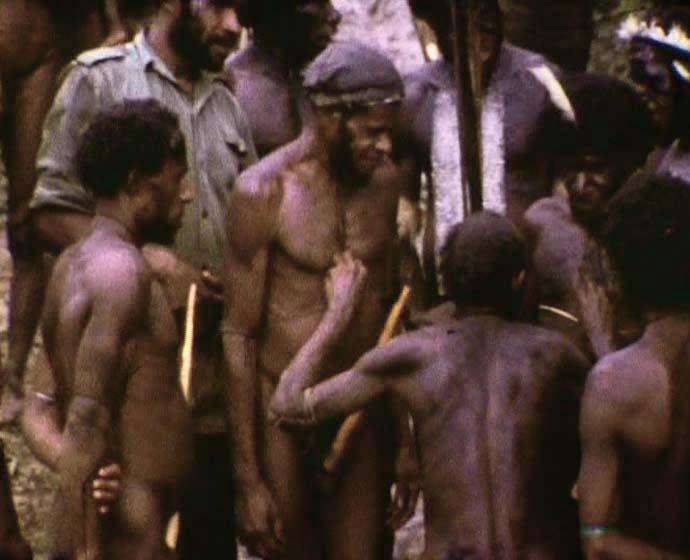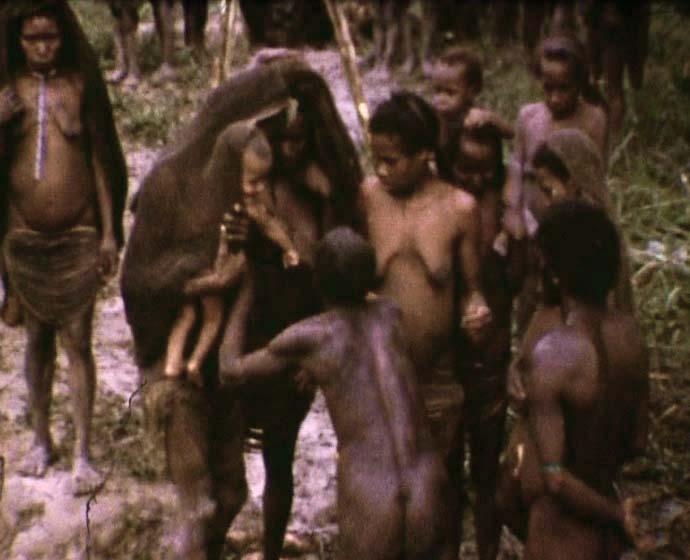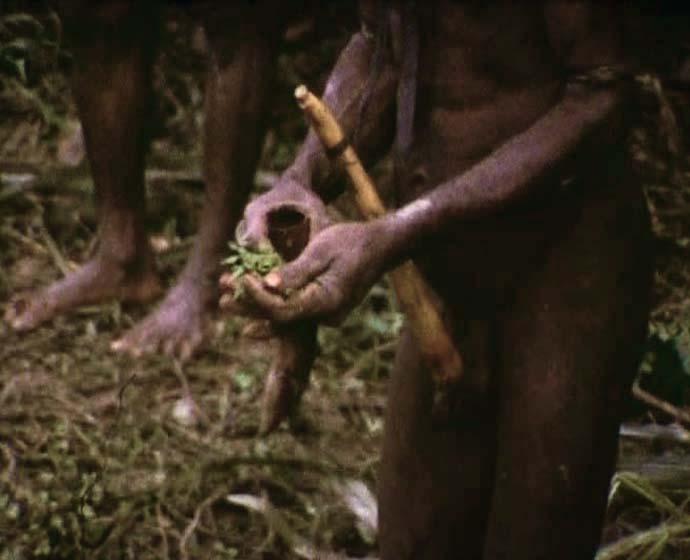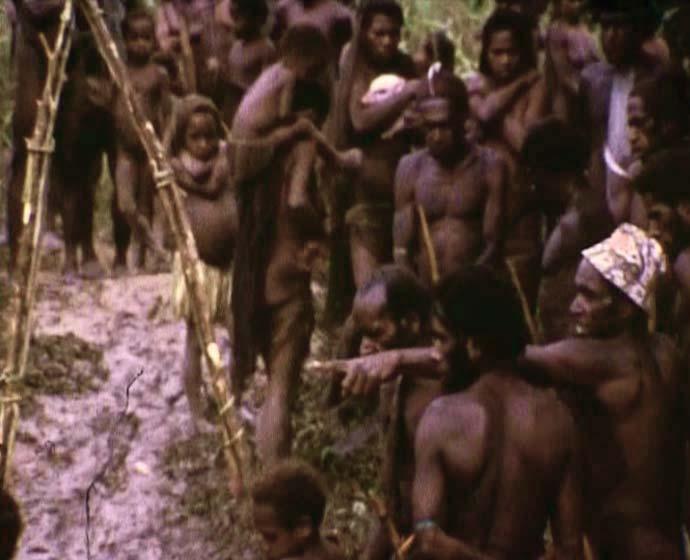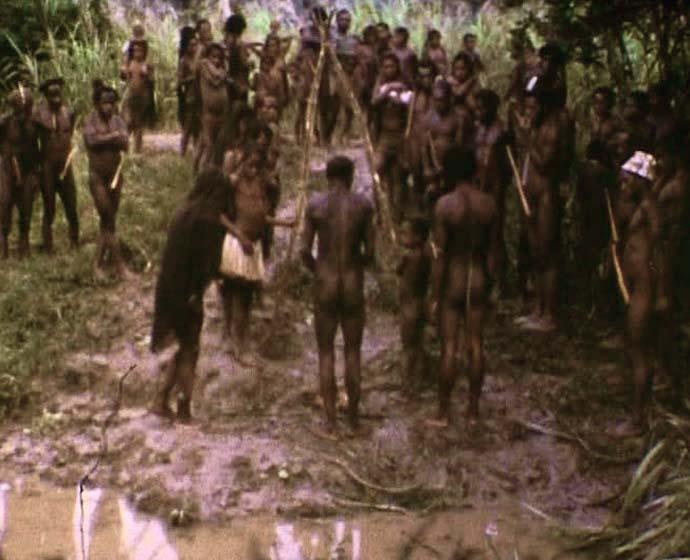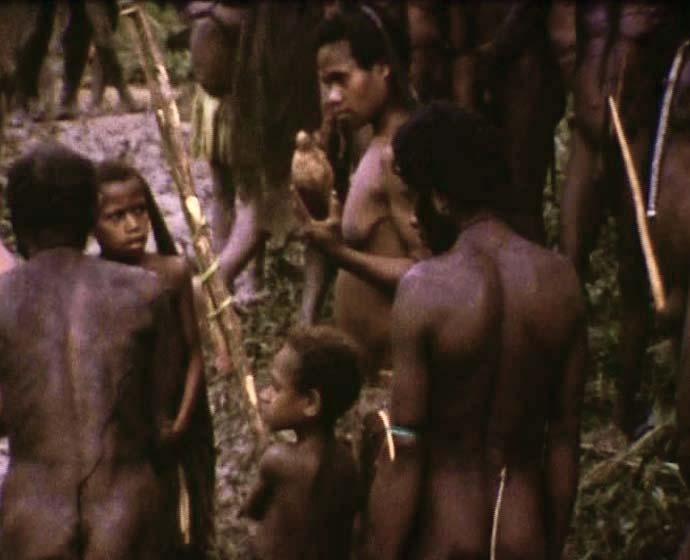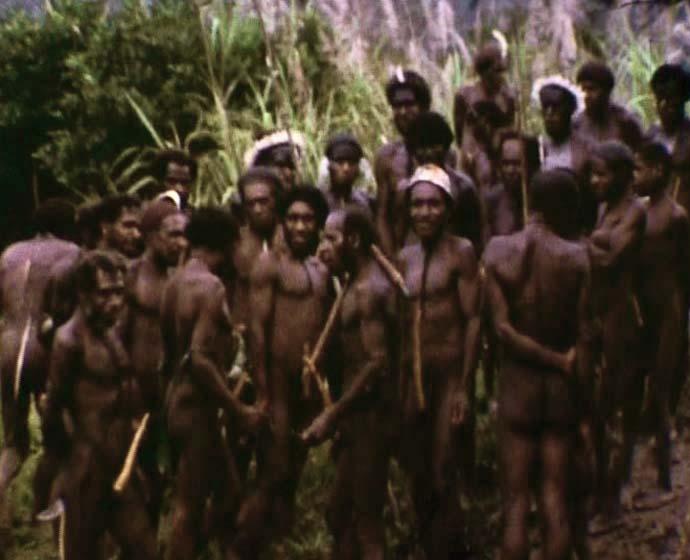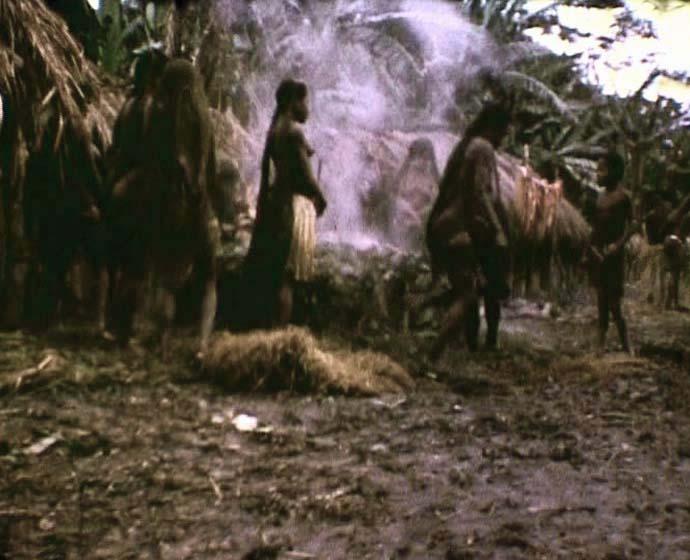Film by father Jules Camps OFM, recorded during the 1970s in the central mountain area of Irian Jaya. Funeral Rites I deals mainly with the immediate rites associated with death of the Dani living in the Baliem Valley. It showes the first and the second day's activities: the rites concerning the disposal of the corpse and placating the ghost.
Contents
Description: The death of a person in the Baliem initiates a series of rites lasting over a number of days, months and indeed, years. This film (part I of two films on the subject) deals mainly with the immediate rites associated with death. The rites are concerned with the disposal of the corpse and placating the ghost. Funeral Rites II (Camps 31, part I) is concerned with divining the cause of death and the later killing of pigs as an obligation of the dead person's ami. Funeral Rites I is divided into 2 parts: the first and the second day's activities. The funeral rites depicted in this film are for Keamente, daughter of Alokobale and wife of Watnom. Keamente was approximately aged 16 years at the time of her death. The pyre for Wusage, an old woman who died in Saliama. The rites ugulin of smearing mud over the body as a sign of grief and mourning for one who had died. The guests are shown entering the uma at Yiwika to take part in the rites for Keamente. On the first day the guests will arrive in small groups and ritual mourning will follow the greetings with those who come. A group of women guests are shown sitting before the ebeai, weeping and chanting for the dead girl. This is termed le agiogei or "they are weeping". The usual killing of pigs and cutting up of pigs occurs at this point, but is not shown here. (See: Ima Wusan I, Camps 9). The cutting off of the ears and tails is shown for some of the pigs killed for this feast. The intestines are cleaned and later eaten by the people, who are shown sitting about the silimo. Ompailekhe, the mother of Keamente is shown with leaves on her head as a protection from the hot sun and another woman is shown with her suckling child. They are waiting and watching the preparation of the steam pits which is occurring at this time. (See: Wen Hagasin, Camps 2 and Ima Wusan I, Camps 9, for the description of pit preparation). Leaves from the roof of one house will also be cooked and later eaten. Throughout the whole day guests will arrive continuously. They will be greeted in turn and the ritual mourning and chanting, le i-ja, will occur. The le i-ja is always about the person who had died. Irenkek is shown engaged in this characteristic mourning activity. Ai and Watnom, the dead girl's husband, are also shown. Watnom along with 16 other persons will change their names because of the death of Keamente. A group, to include Kula, from another clan, is seen bringing exchange stones, the je to be given over to the clan of Keamente. Others will be given in return to this group. In the meantime the pit contents have been emptied and Maitmo, Kurelu (both very important chiefs) and Phelentogo go about cutting the pigs to be distributed. They use the traditional wimukul (bamboo knife) for this purpose. The food is then consumed, the pigs, the sweet potatoes and the sweet potato leaves. After the food has been eaten, the men bring the ceremonial exchange items from the pelai. Included in this group of items are su aga, je stones and jerak. These are laid out, one on another and together is called je talek. Kurelu, the biggest local chief, is seen viewing the gifts and expressing pleasure by calling out the name of the dead girl followed by "wa, wa, wa", the normal expression used to indicate great pleasure. This acknowledges the acceptance of these gifts which are then handed out to the necessary groups. Up to 50 jerak were then brought from the pelai and laid out on banana leaves. Each was brought as a gift and each person who brought a jerak will be given one in return. This function is performed here by Ilagabek. The women Kanenage and Japhilikhe are shown bringing jerak. The name of the giver is shouted as it is handed over to Ilagabek. A great deal of discussion occurs over who is to get which jerak in return. (See: Je Talin, Camps 5, for a description of the je-stones and their use.) This activity or jerak sumpusin finished, the wood for the haly pelago or funeral pyre is then arranged. It is a soft scrub wood taken from the river or mountains. The isauk is brought out which is later shot with an arrow and run from the silimo to lead the way out for the dead girl's ghost. Some older men also shout the name of the enemy of place where the ghost should go. The pyre is built and the he warek or corpse is taken from the hunila where it has been kept and prepared with grease. The whole of the silimo erupts in mourning sounds and a number of people react. The girl's ami, Imakare, would himself be burned with her. A woman beats on her own head with a stick. The silimo seems in a state of confusion. The corpse, dressed in jokal and su, is placed on the fire and covered with more wood. The isauk is run of the compound. Mourning in the form of crying, chanting, holding heads in hands and nervous movements accompany the burning of the warek. The first day's filming comes to an end. Later people sit around in the hunila waiting for sounds of her returning ghost. On the second day, the ashes and bones of Keamente are disposed off and nets brought as gifts will be exchanged by the women. The mutilation of fingers and ears is much in evidence. Imakare has cut off a finger as a sign of grief, ingki palin. Mepmuluk is shown with a piece of his ear cut off, asuk palin. The oak-oba of Keamente is shown in close-ups. This is later gathered using a banana stem and taken to the inoak natogolekma. As stated above, on this day the nets brought as gifts will be exchanged by the women. Tantuge, the younger sister of Alokobale and thus a relative will do this, termed su sumpusin. All who brought a net will receive a net in return. The men are not involved in the su sumpusin but are seen looking on and busy with preparations of the su walon for the third day's activity. Pakhalik is seen walking past the su sumpusin with no apparent interest in the affairs of the women. Losikhe and Imakhe are shown with ears mutilated as signs of grief for Keamente. Part I ends at this point but the rites continue on Funeral Rites II, Camps 31, part I. This involves the divination of rats to determine the cause of death of Keamente. Later, perhaps after two months, pigs will be killed by the ami of the dead girl as part of their obligation to her. This is also shown in Funeral Rites II. Persons: 1) Wusage, 2) Jalel, 3) Ompailekhe, 4) Irenkek, 5) Watnom, 6) Maitmo, 7) Kurelu, 8) Ilagabek, 9) Kanenage, 10) Alokobale, 11) Japhilikhe, 12) Keamente (corpse), 13) Imakare, 14) Mepmuluk, 15) Tantuge, 16) Losikhe, 17) Imakhe, 18) Ai, 19) Kula, 20) Phelentogo. Terminology: 1) haly pelago: name given the funeral pyre 2) he warek: woman's corpse (i.e. Keamente) 3) uma: village or compound 4) mokat ai: uma entrance 5) ebeai: woman's house 6) pelai: man's house 7) hunila: cook house 8) silimo: compound courtyard 9) le i-ja: mourning chants and singing 10) wimukul: bamboo knife 11) hymperi: general term for sweet potato 12) eka: leaf 13) je: wusa stones, exchange stones 14) su ago: nets exchanged during funeral rites 15) jerak: ceremonial shell bands 16) isauk: ceremonial grass bundle 17) ami: term for matrilineal uncle or other person in special relationship to deceased woman 18) jokal: woman's skirt 19) oak-oba: ashes and bones remaining after firing 20) inoak natogolekma: place where remains are kept 21) su walon: net symbolizing dead person This description was prepared by Larry L. Naylor, Southern Illinois University in collaboration with J.A.E. Camps ofm and using local informants. Informants for this film: Kirilmo and Holik.


